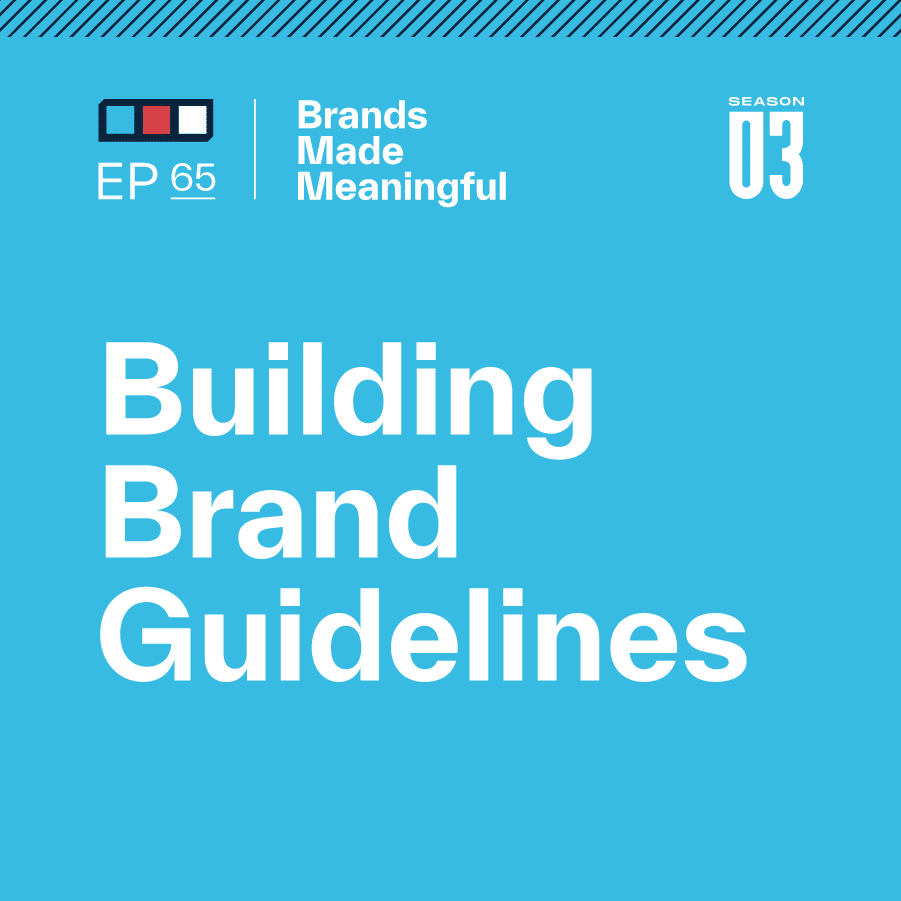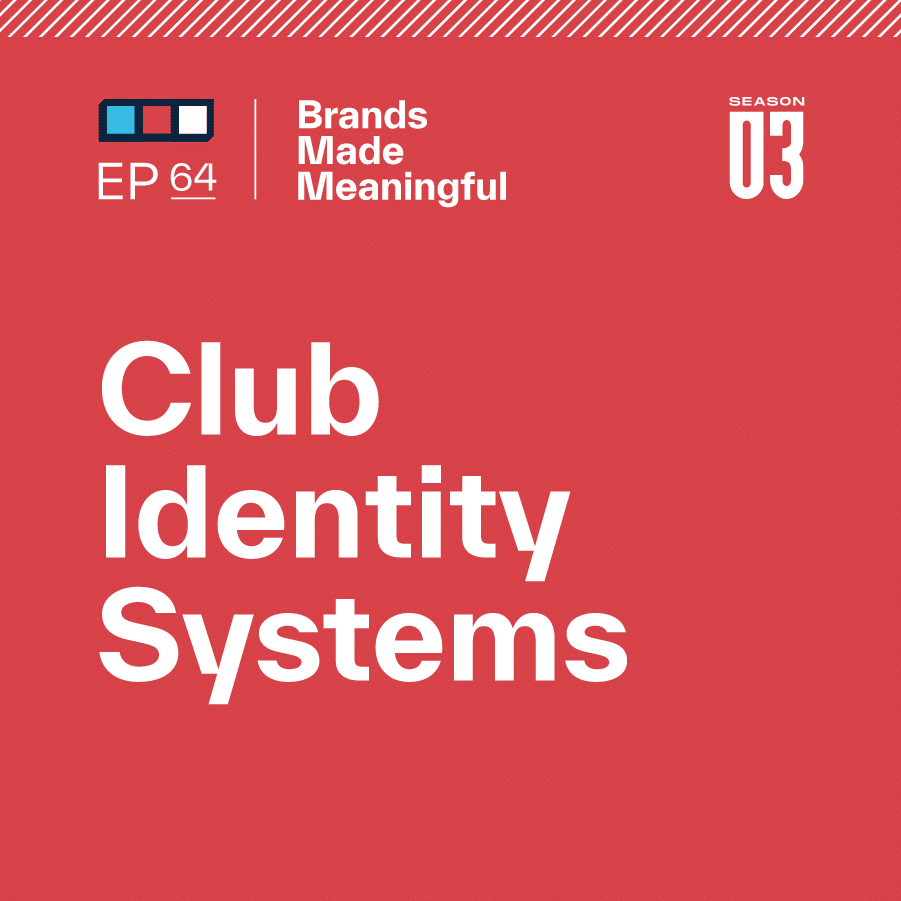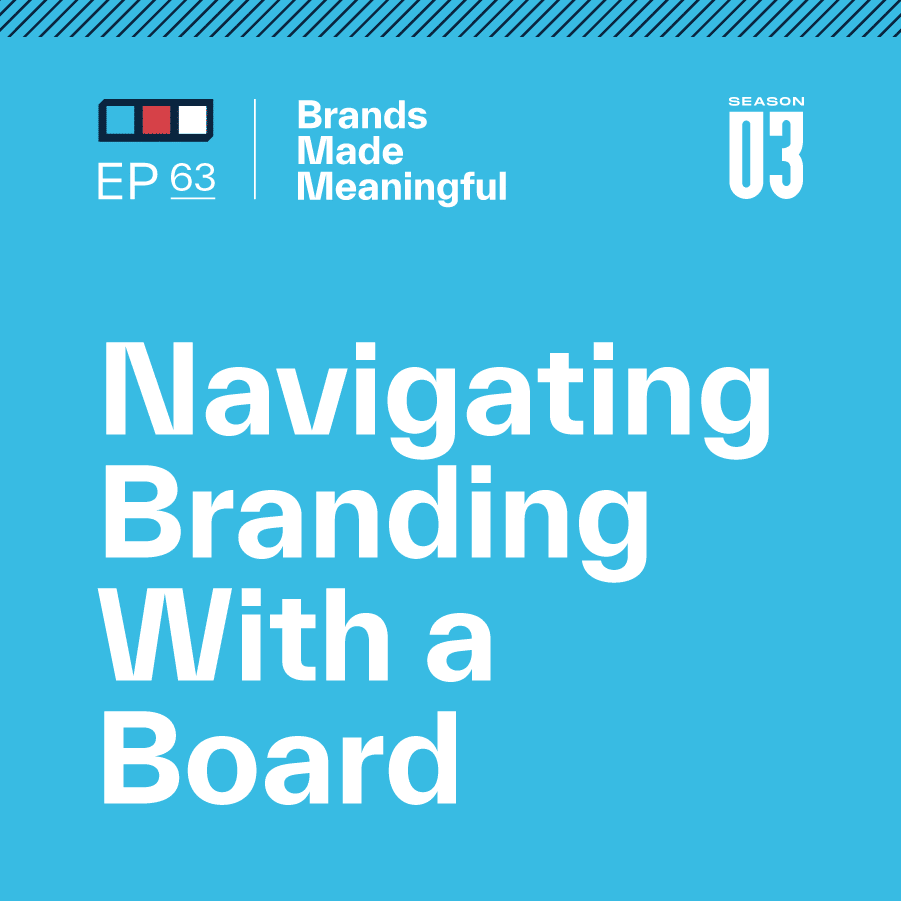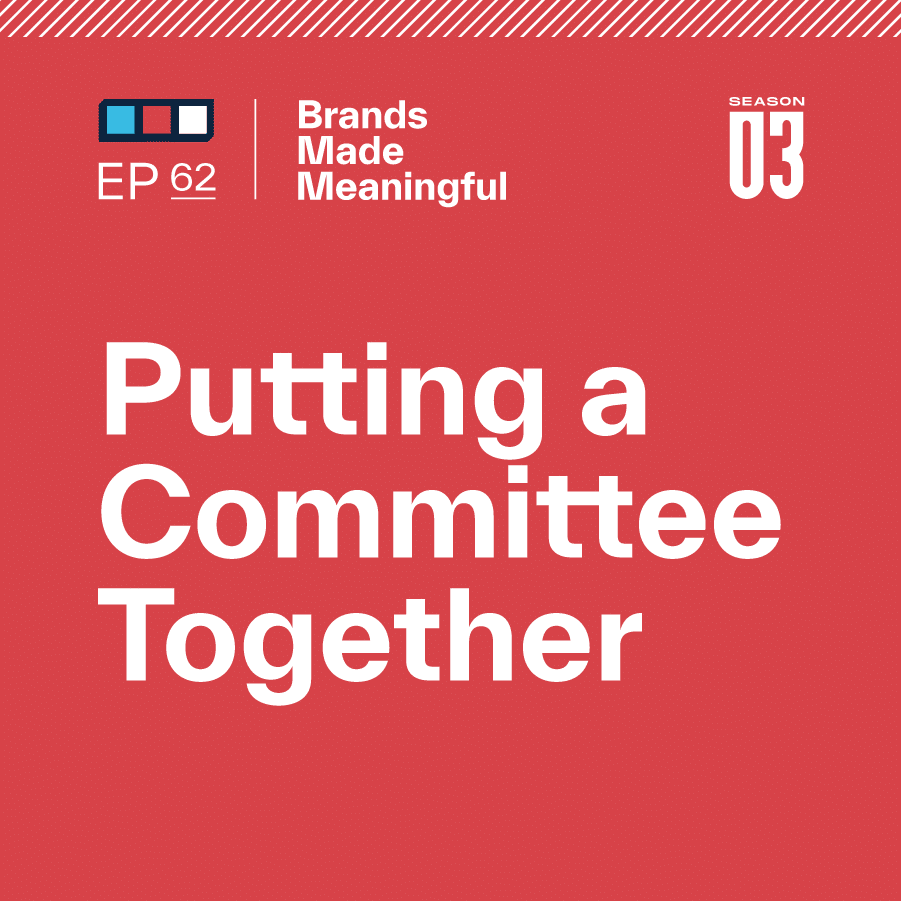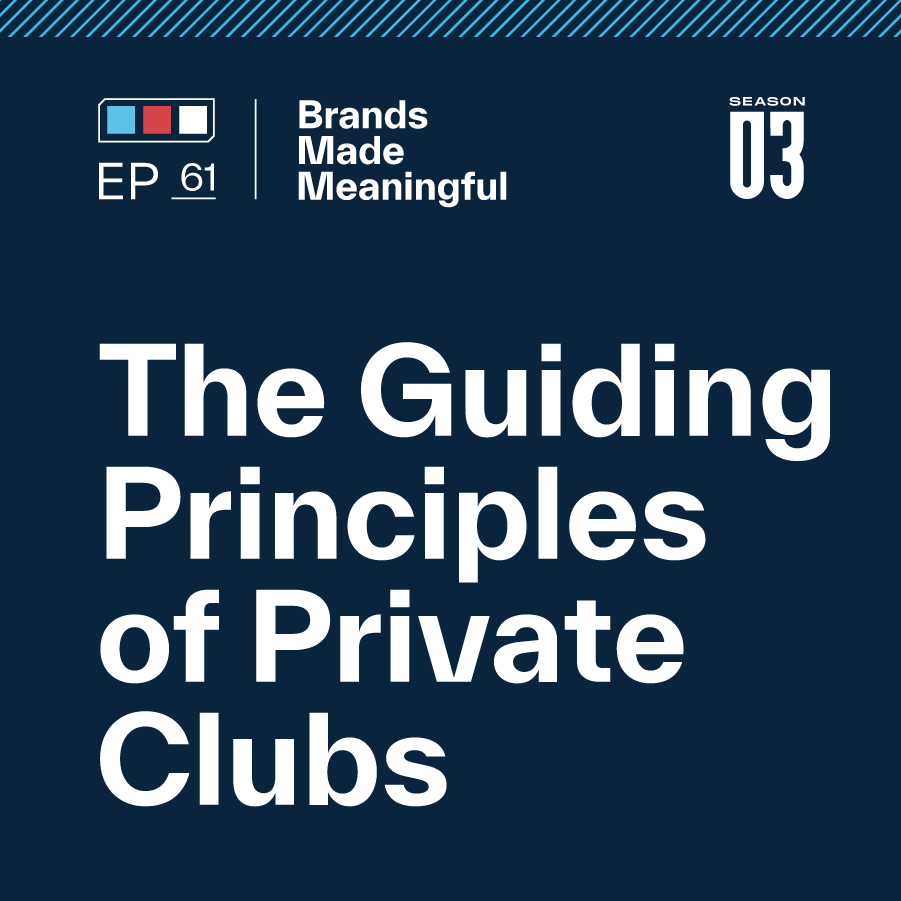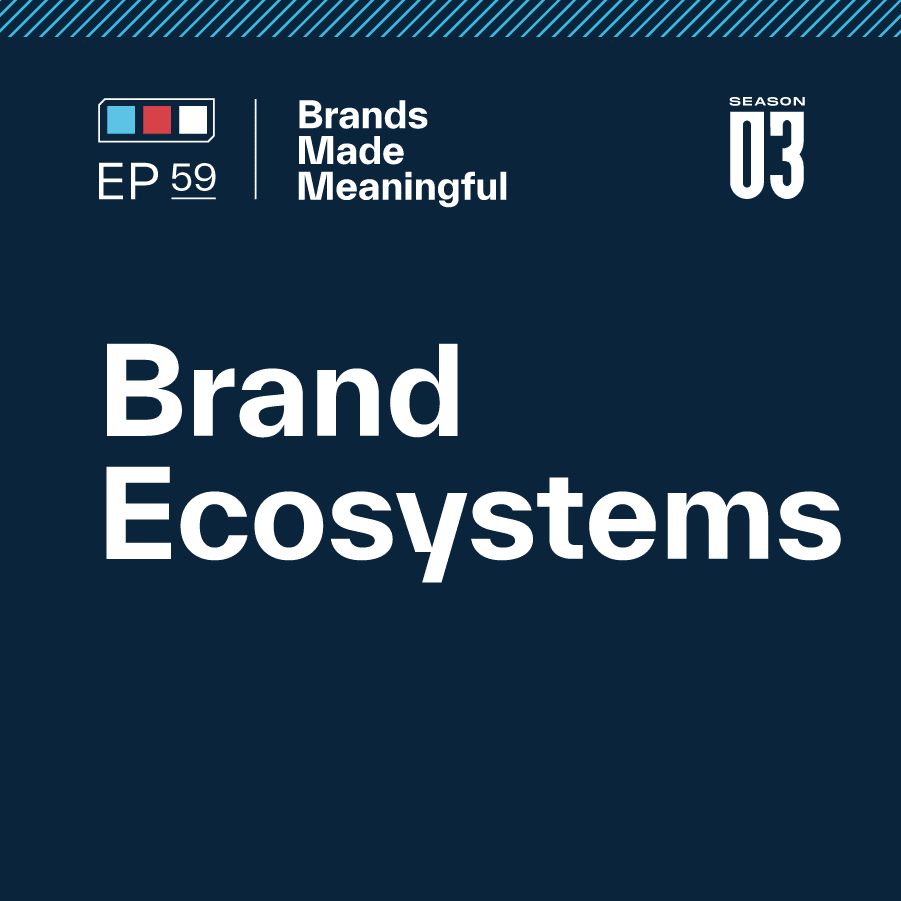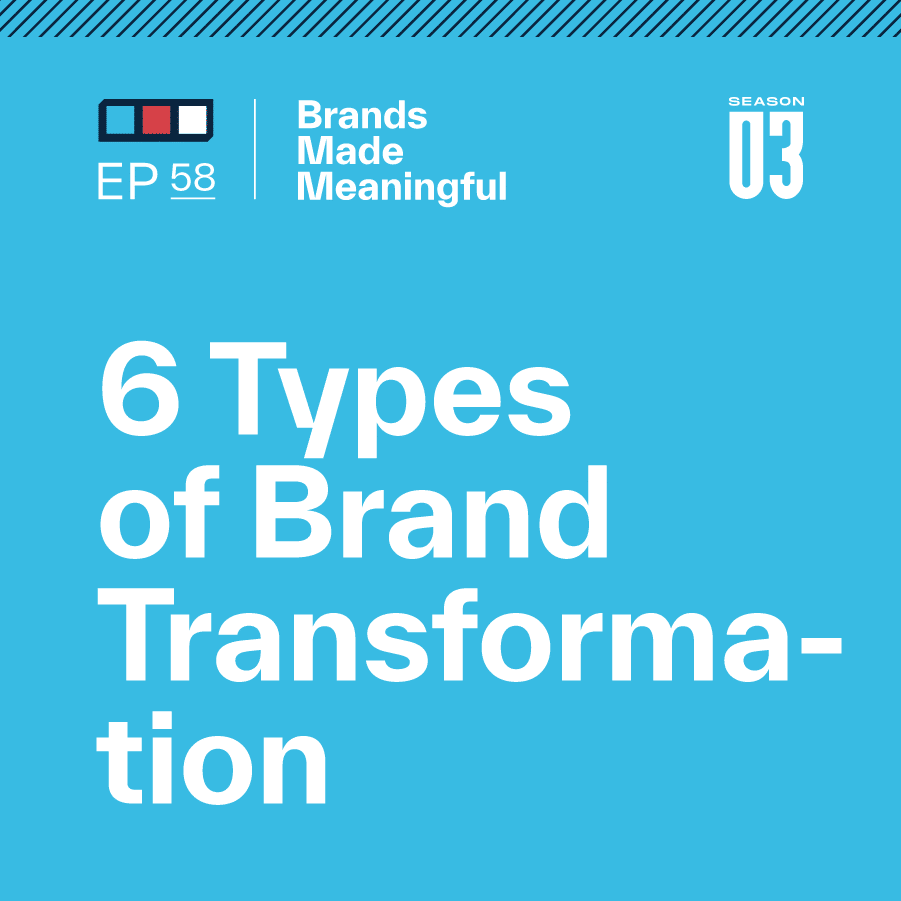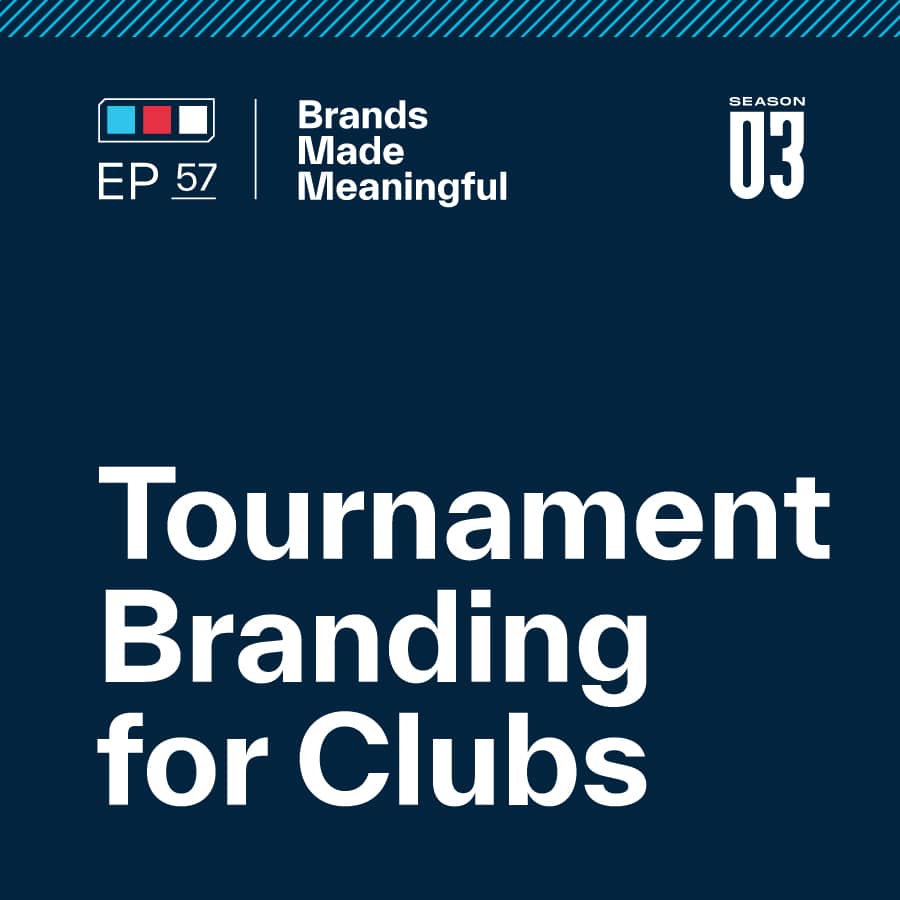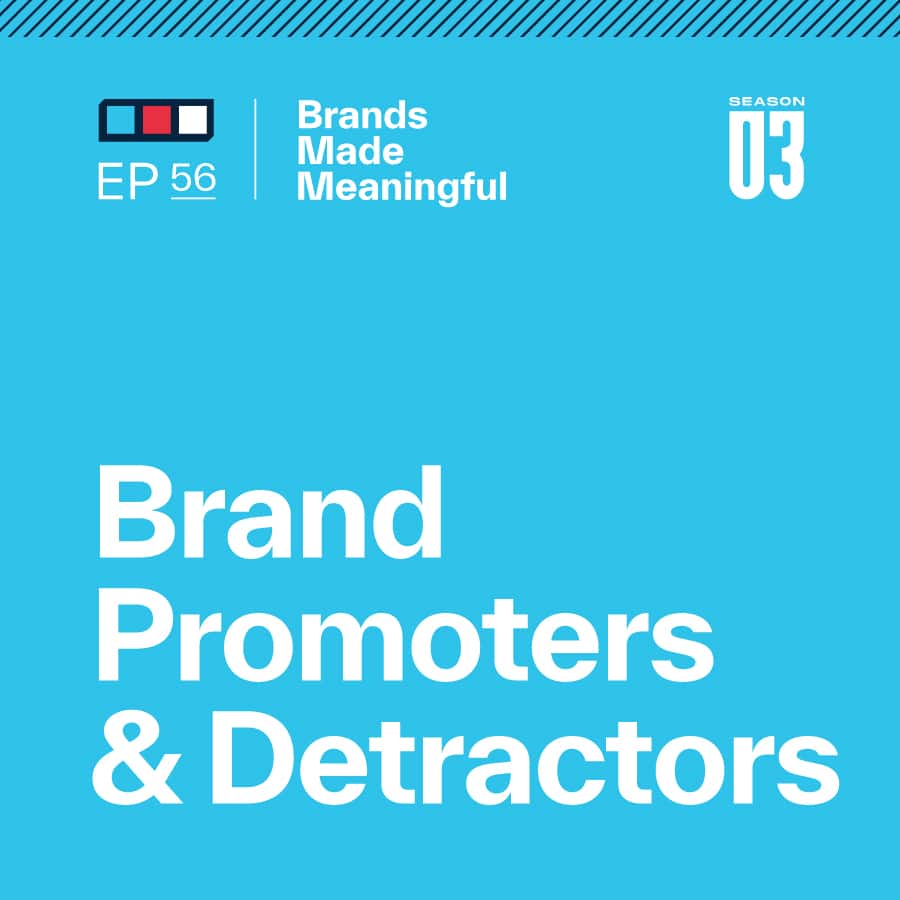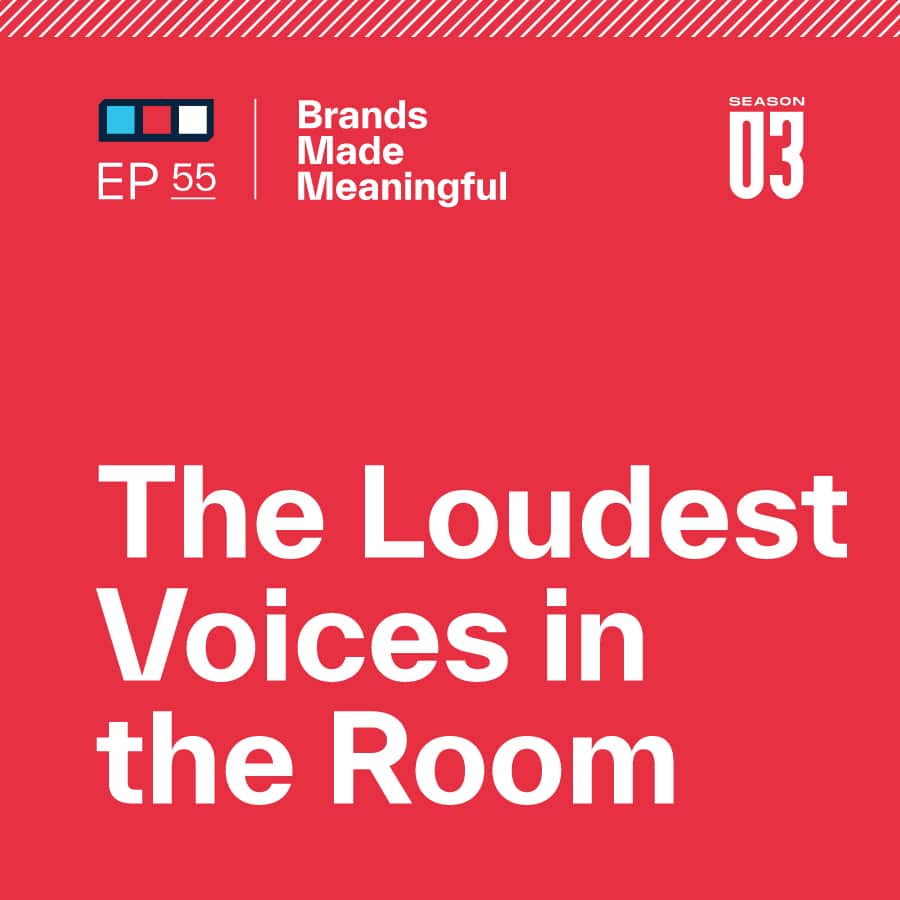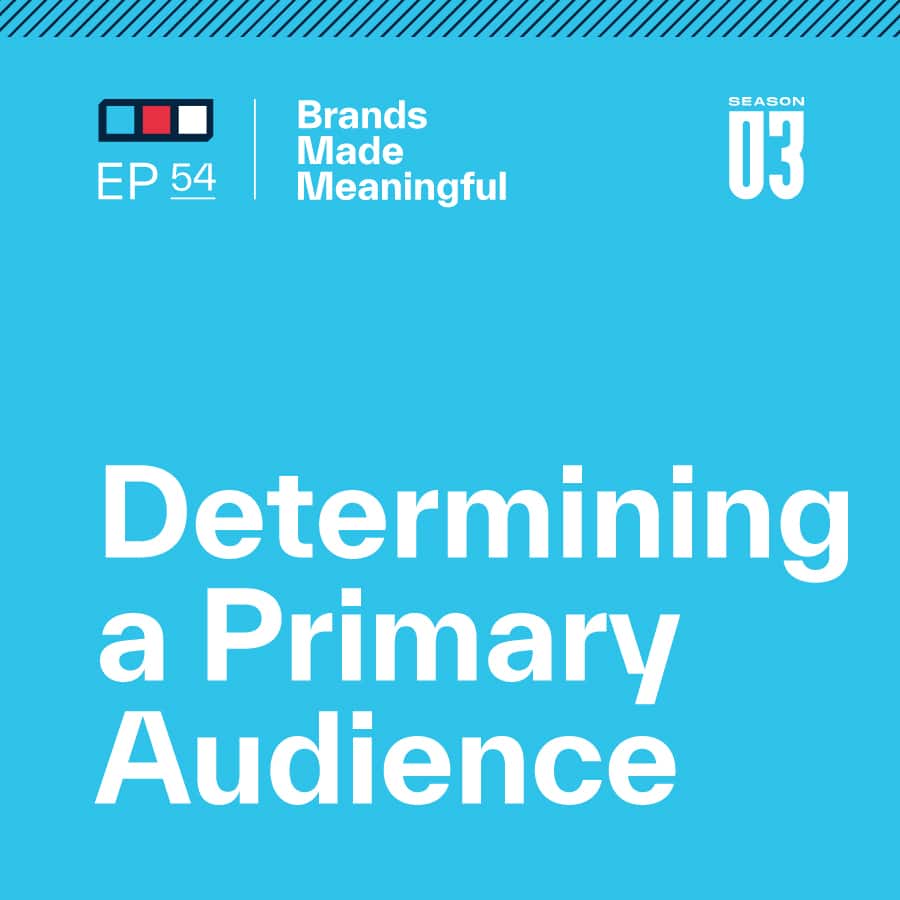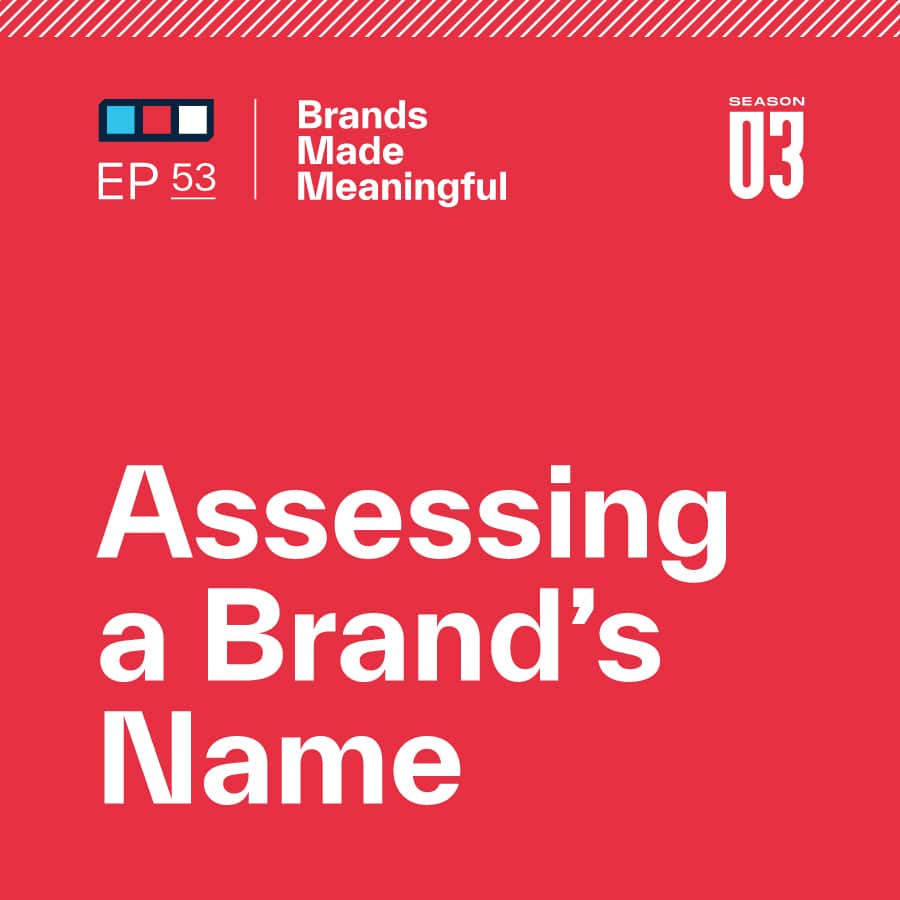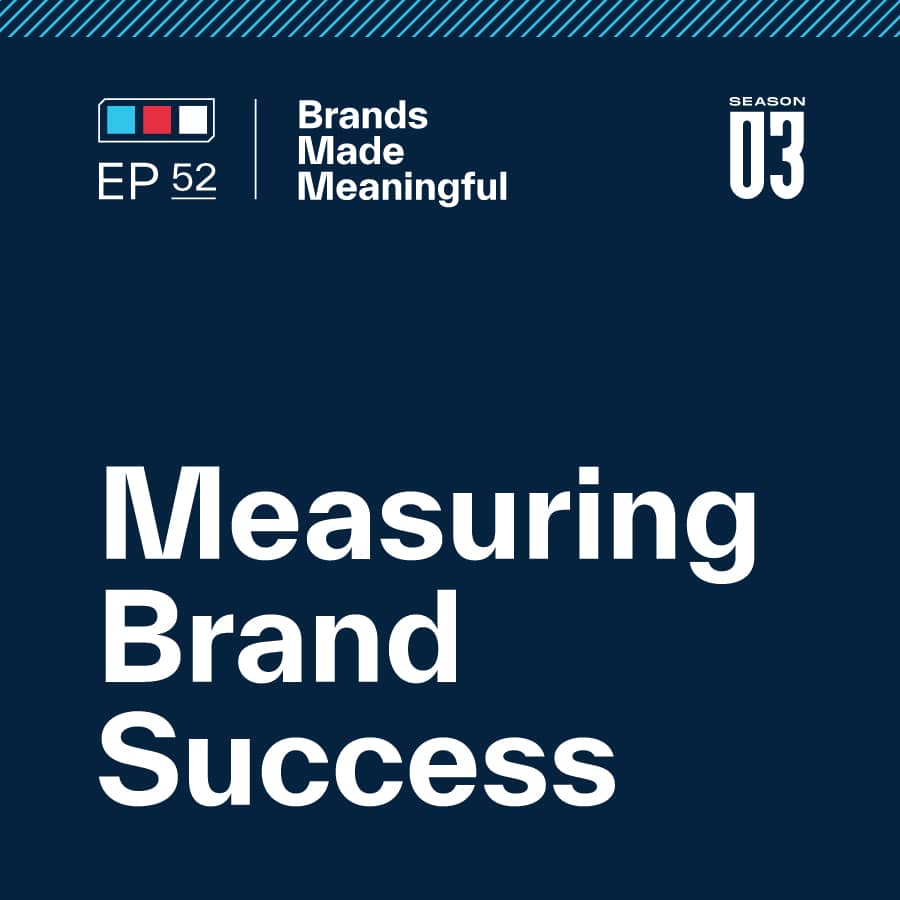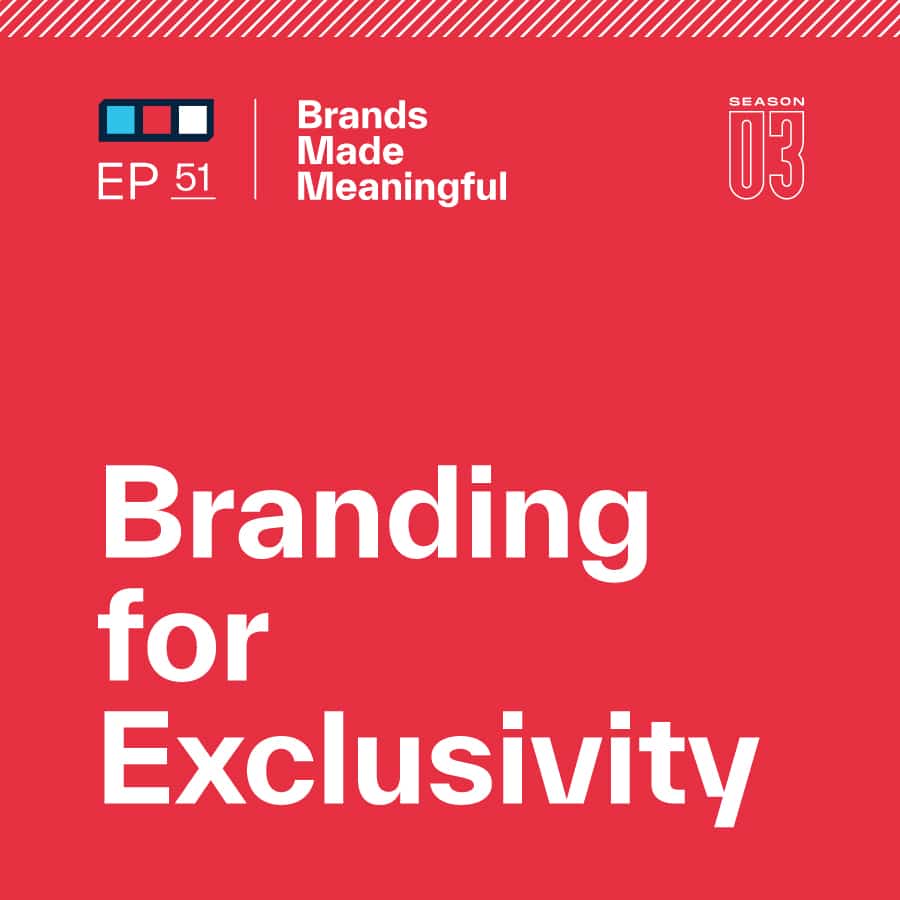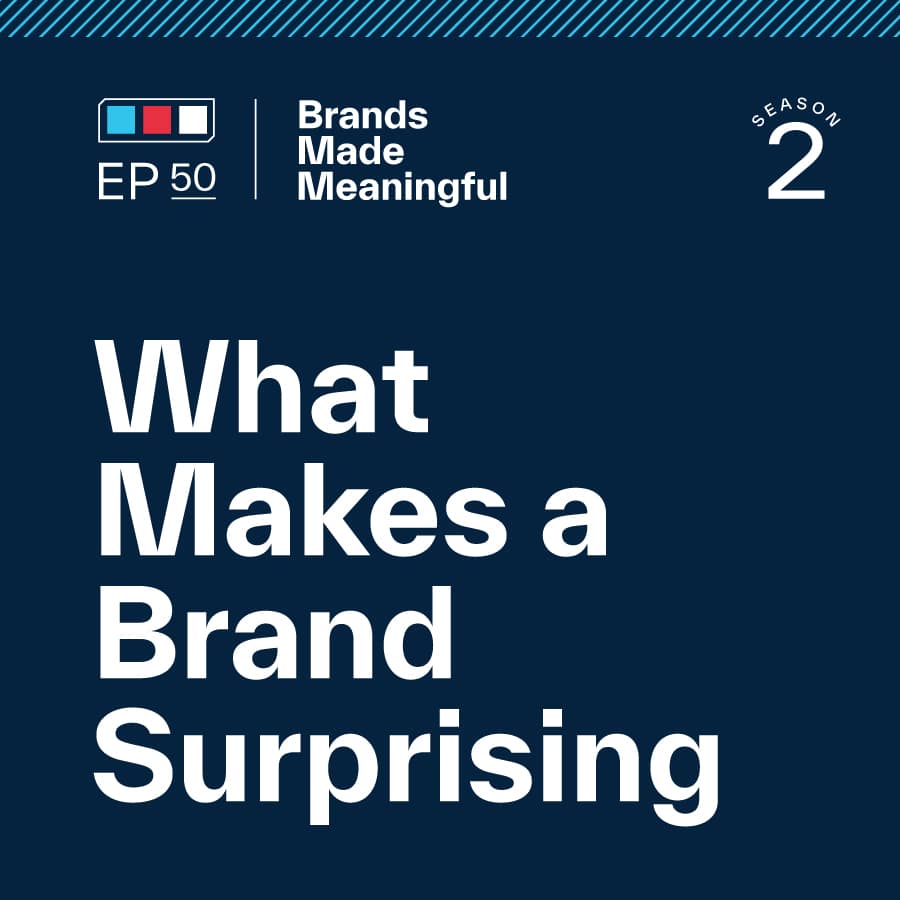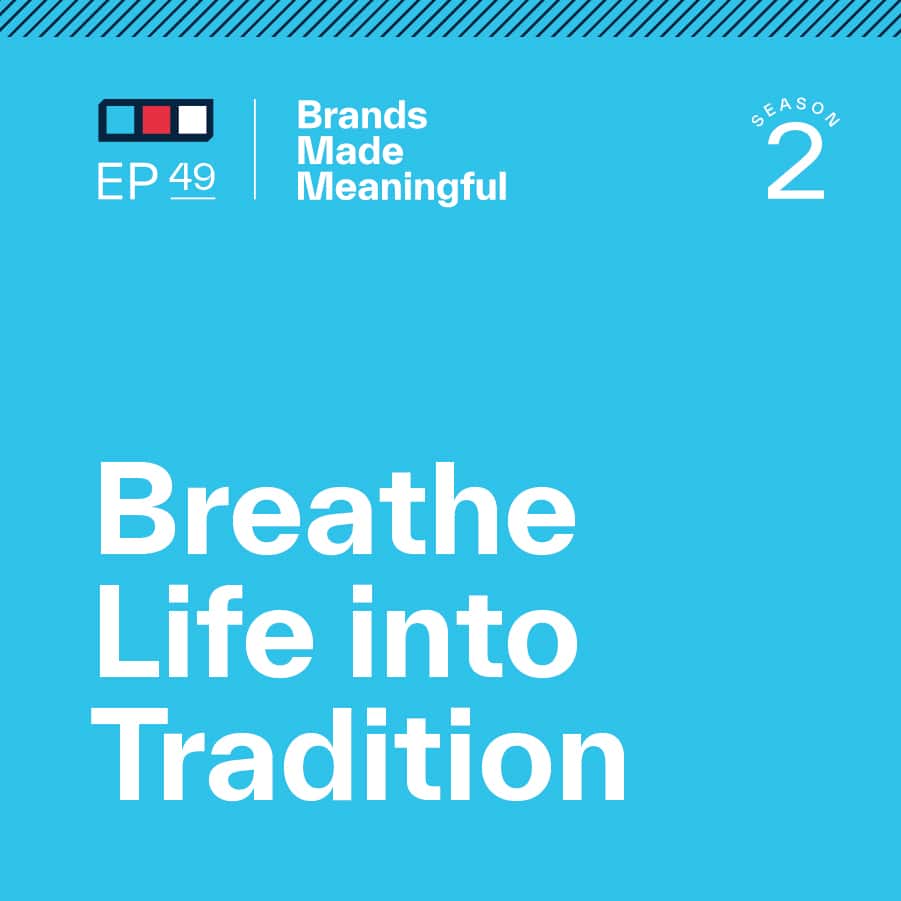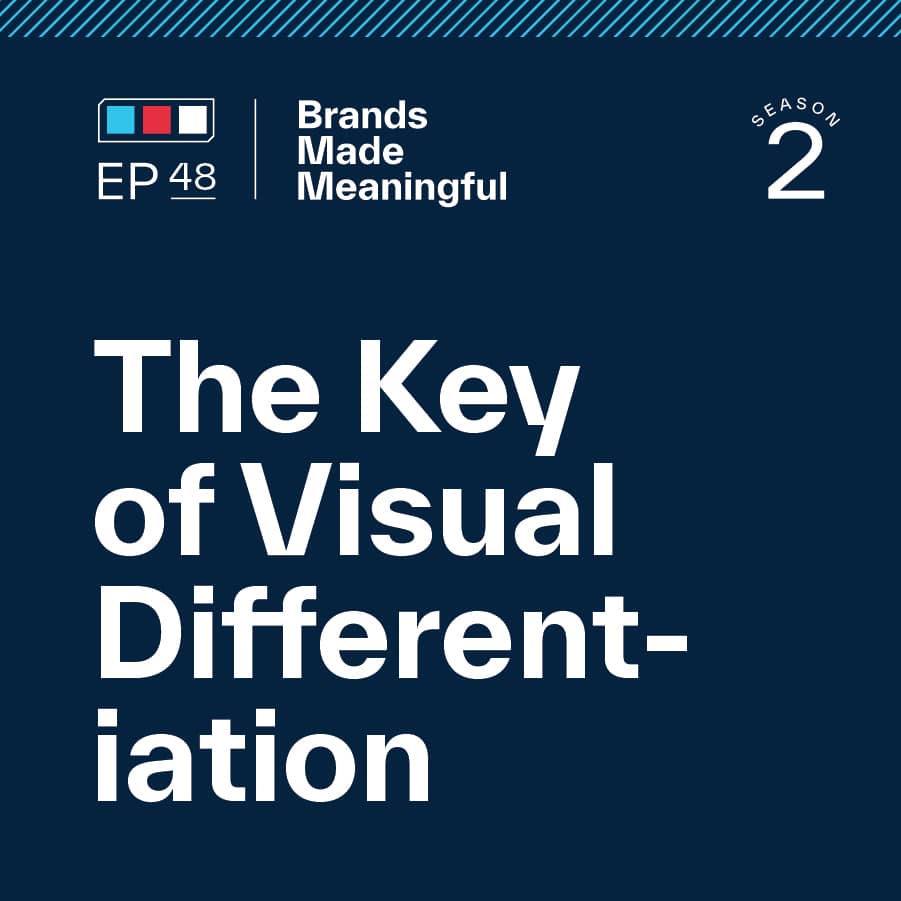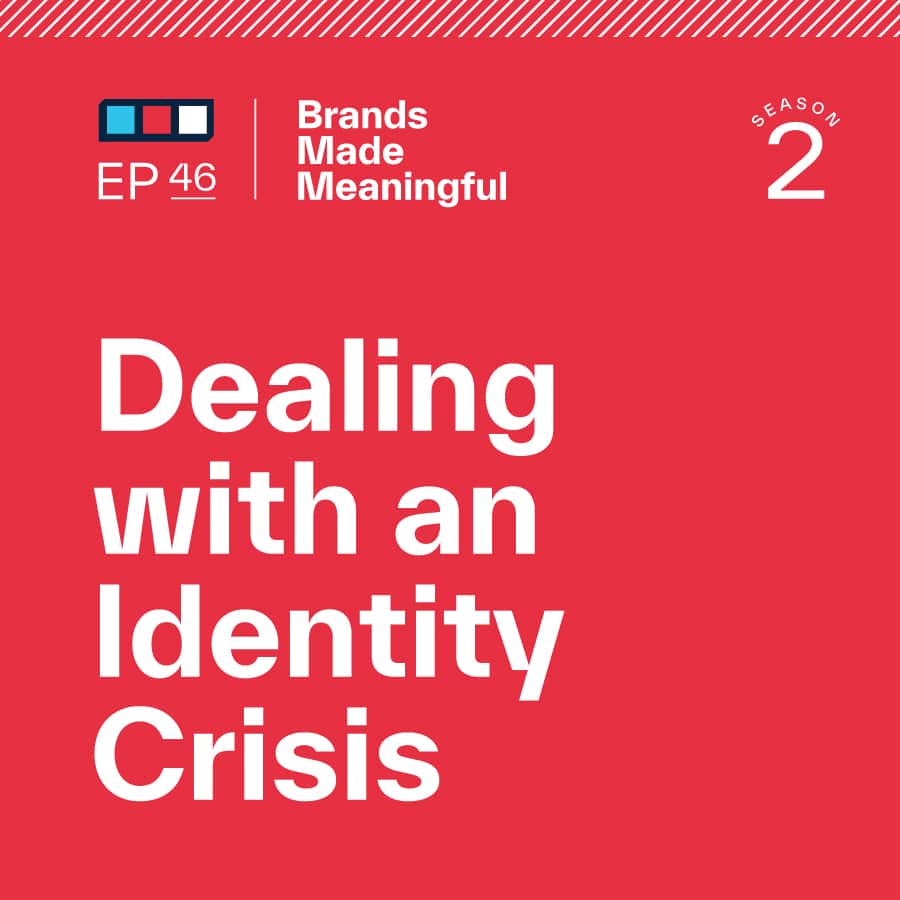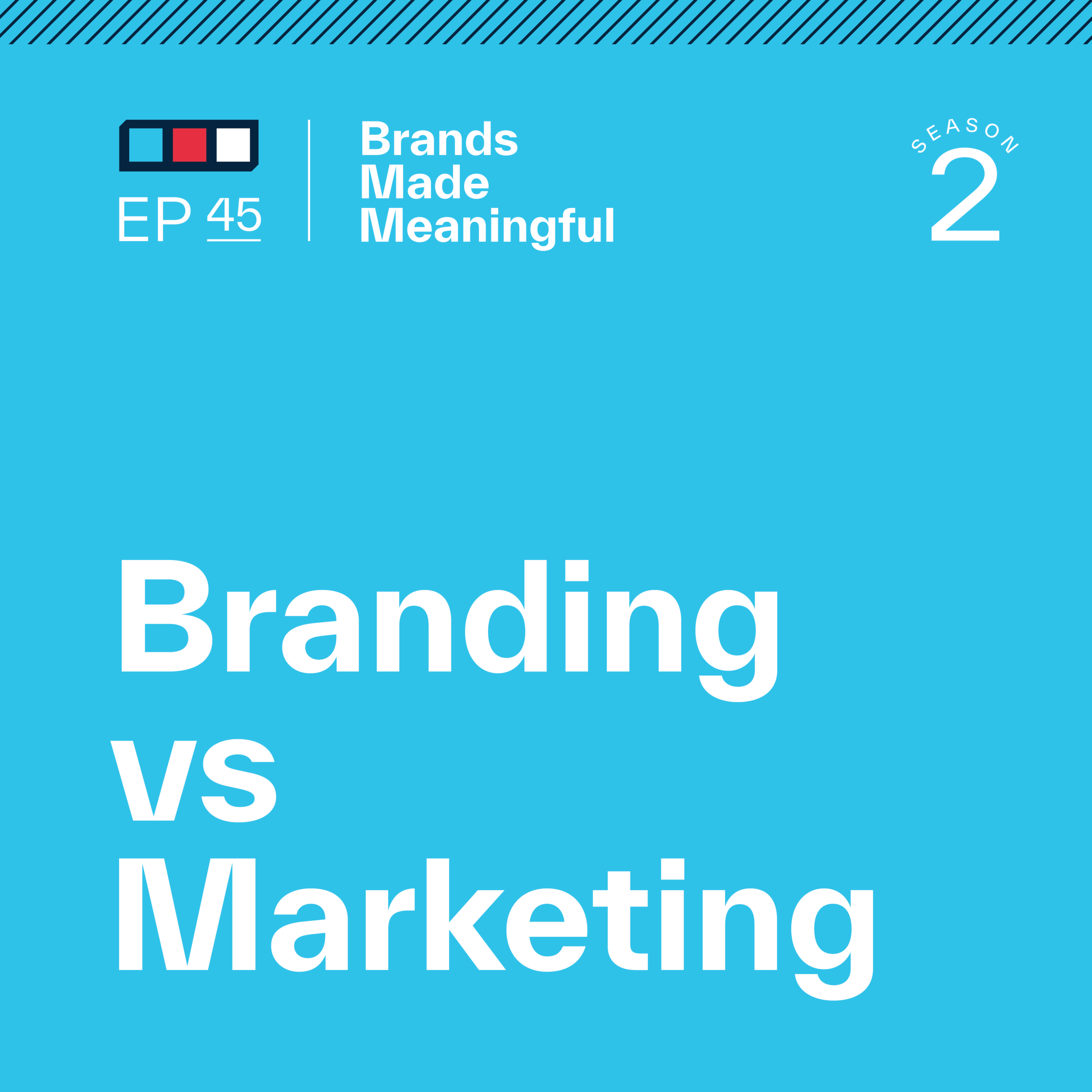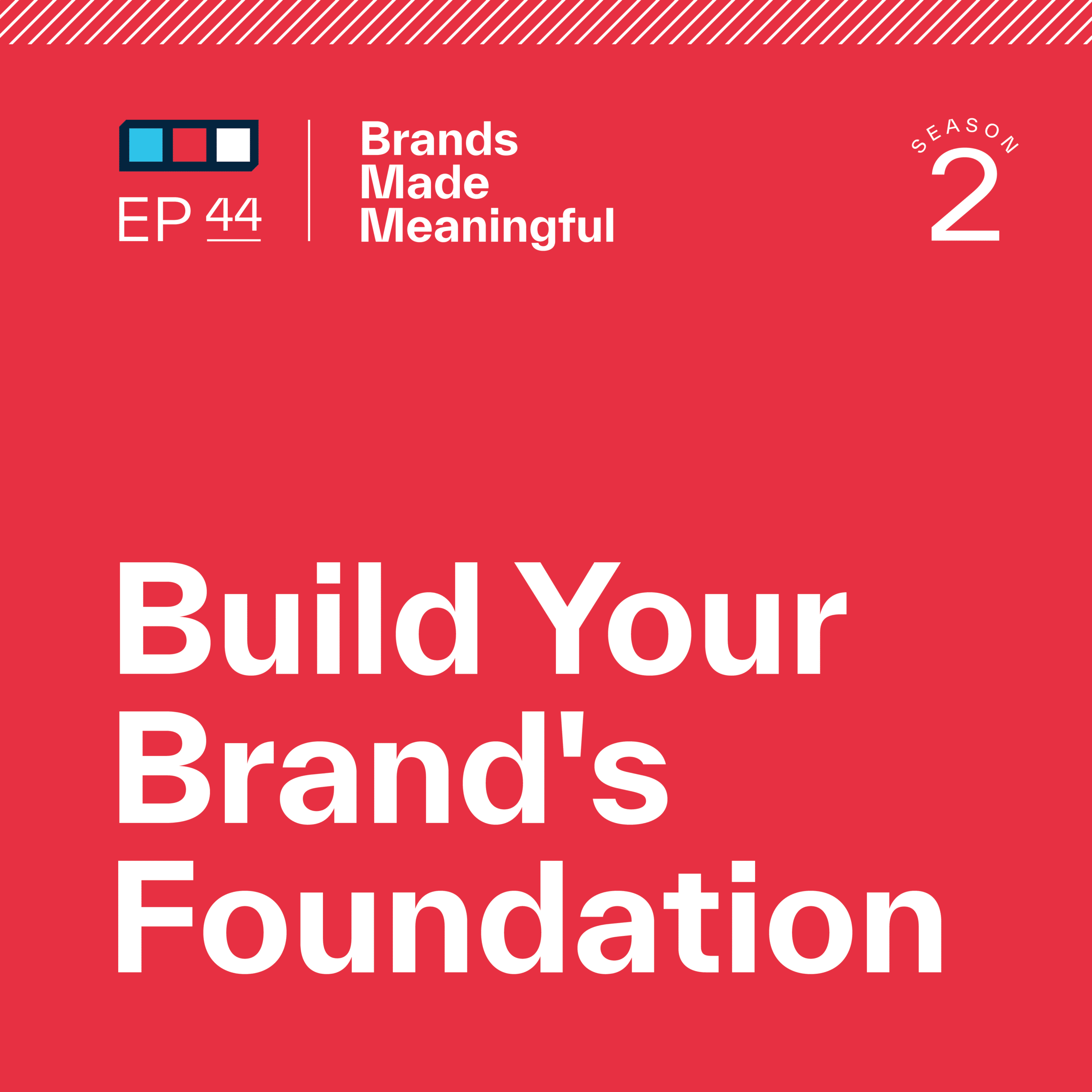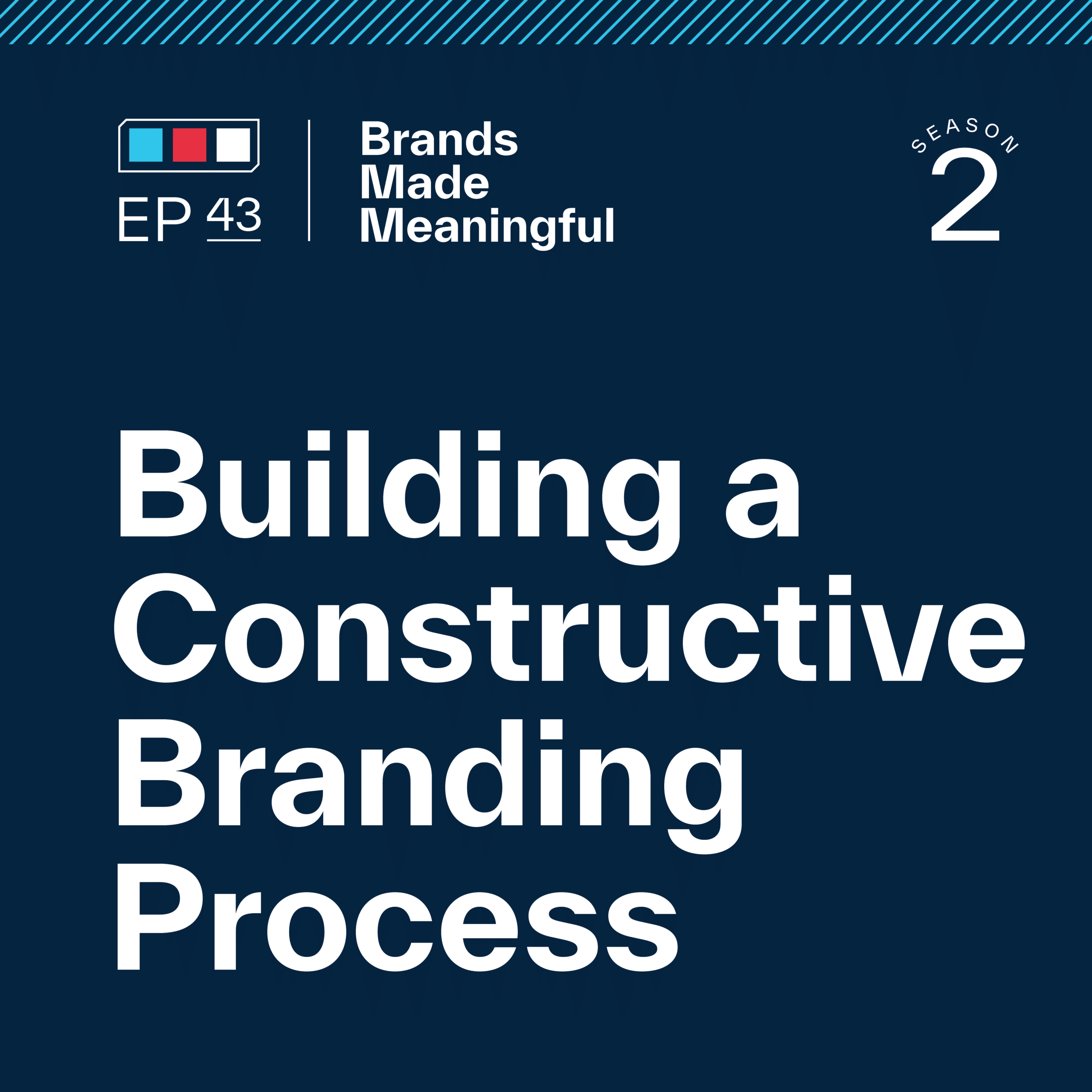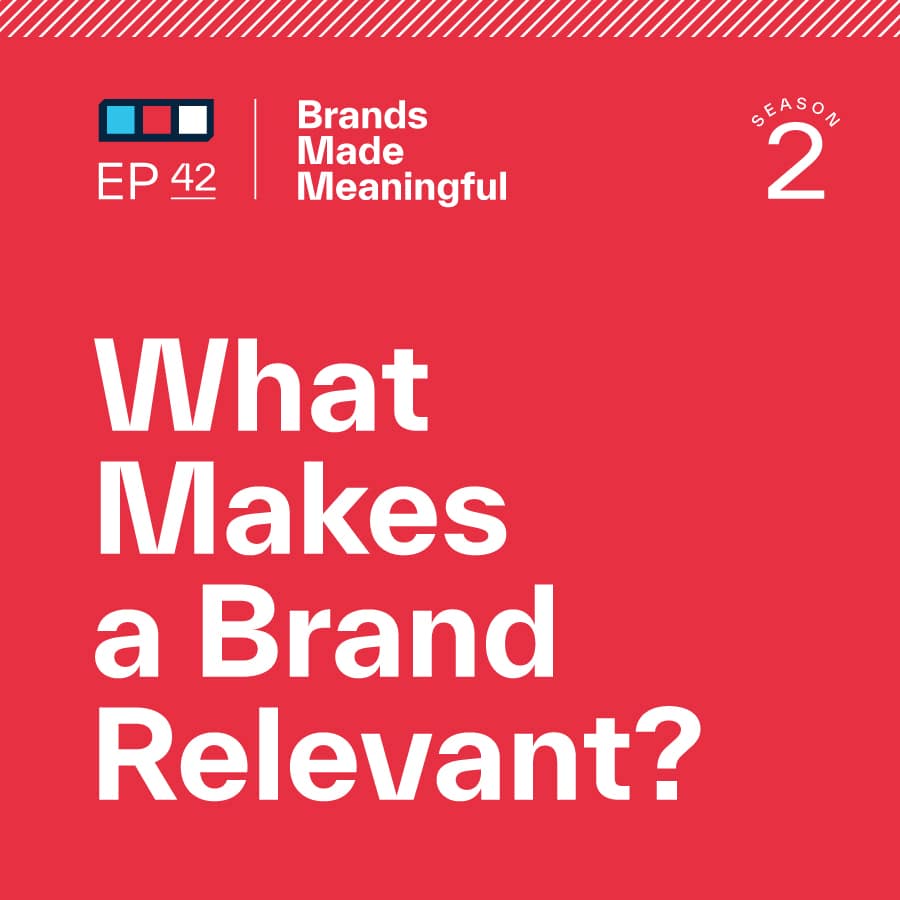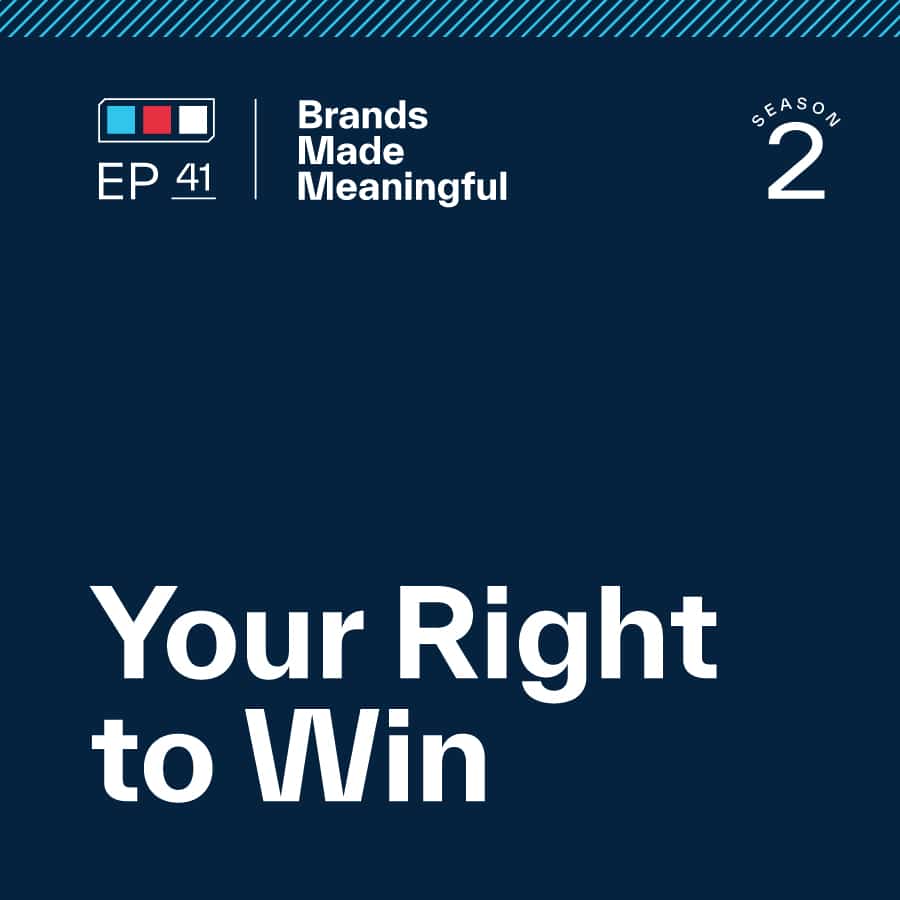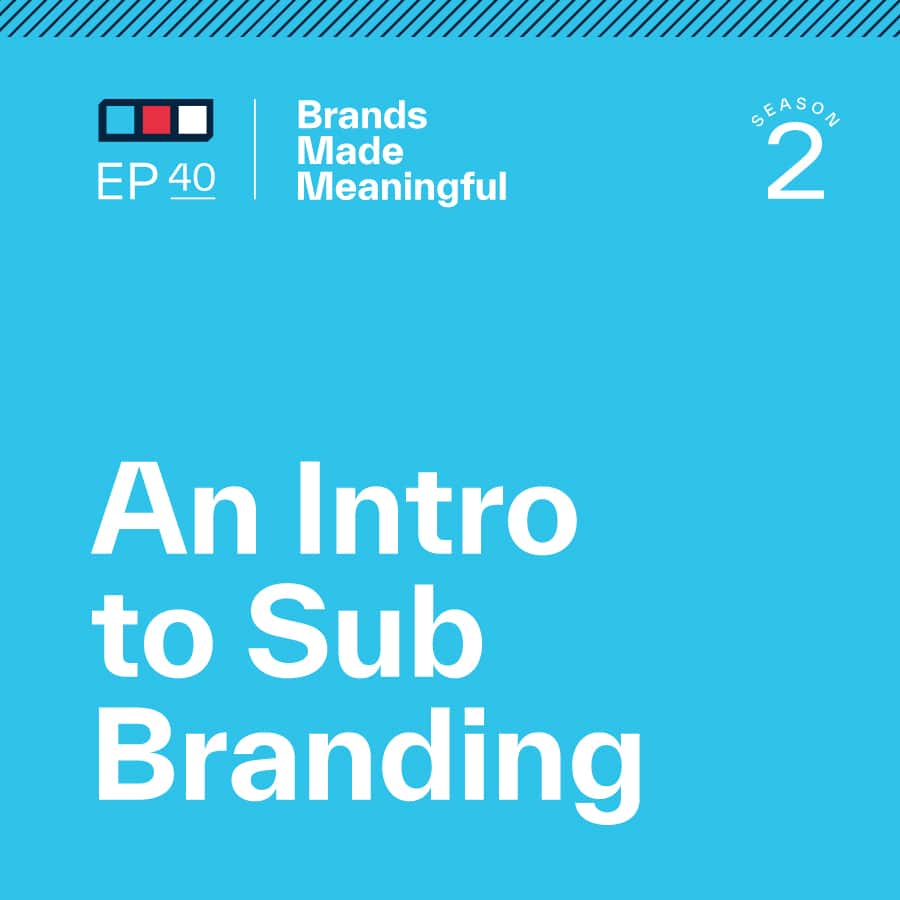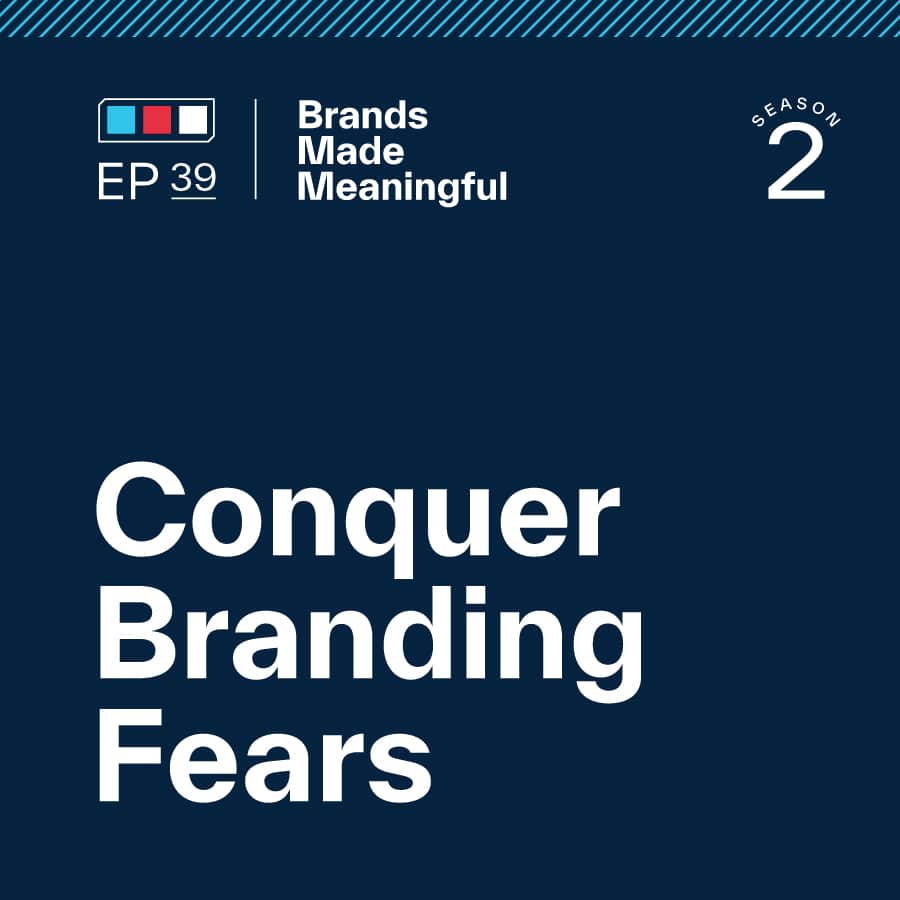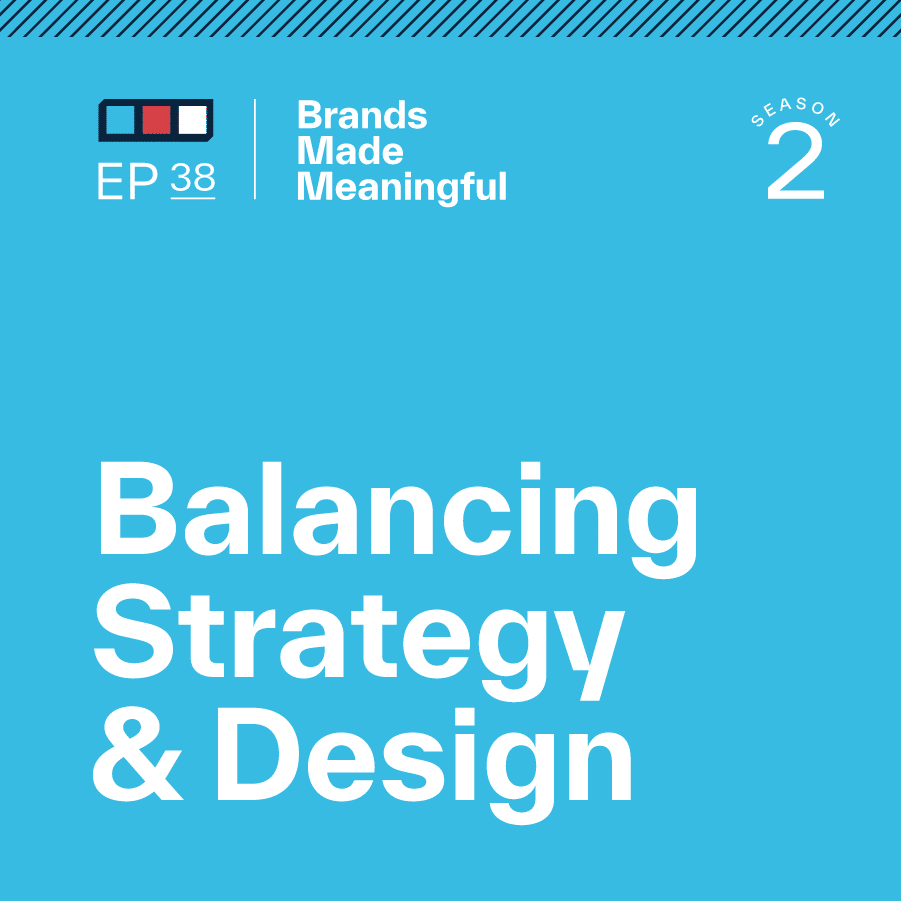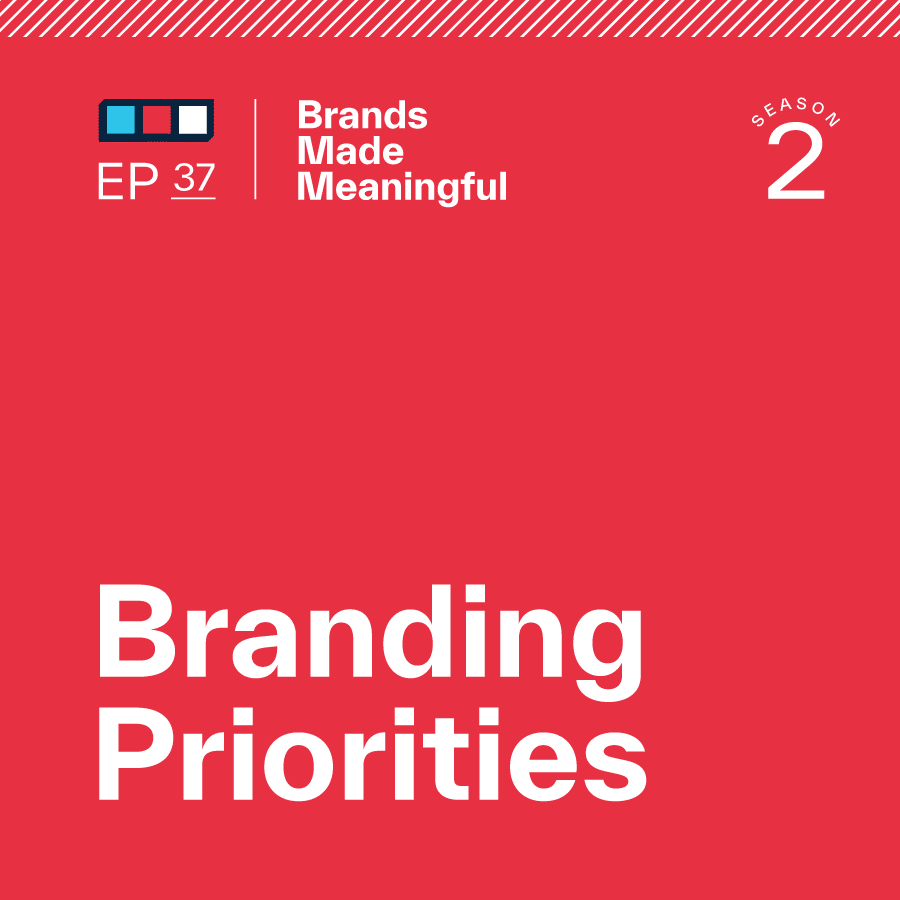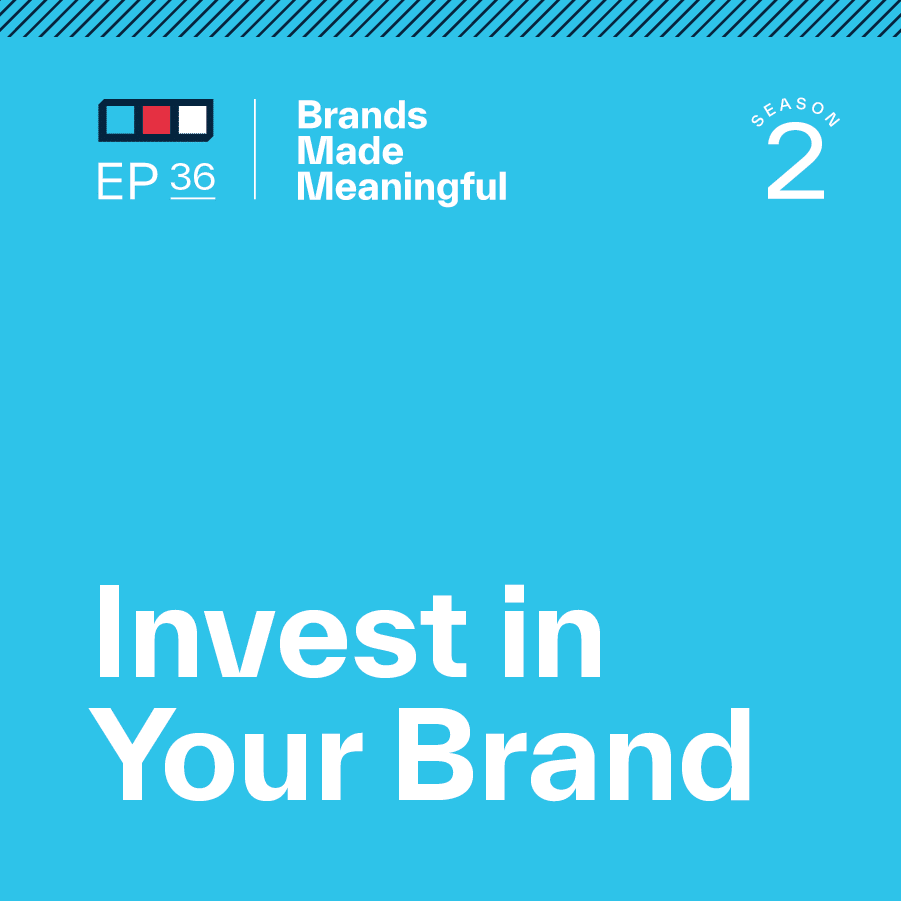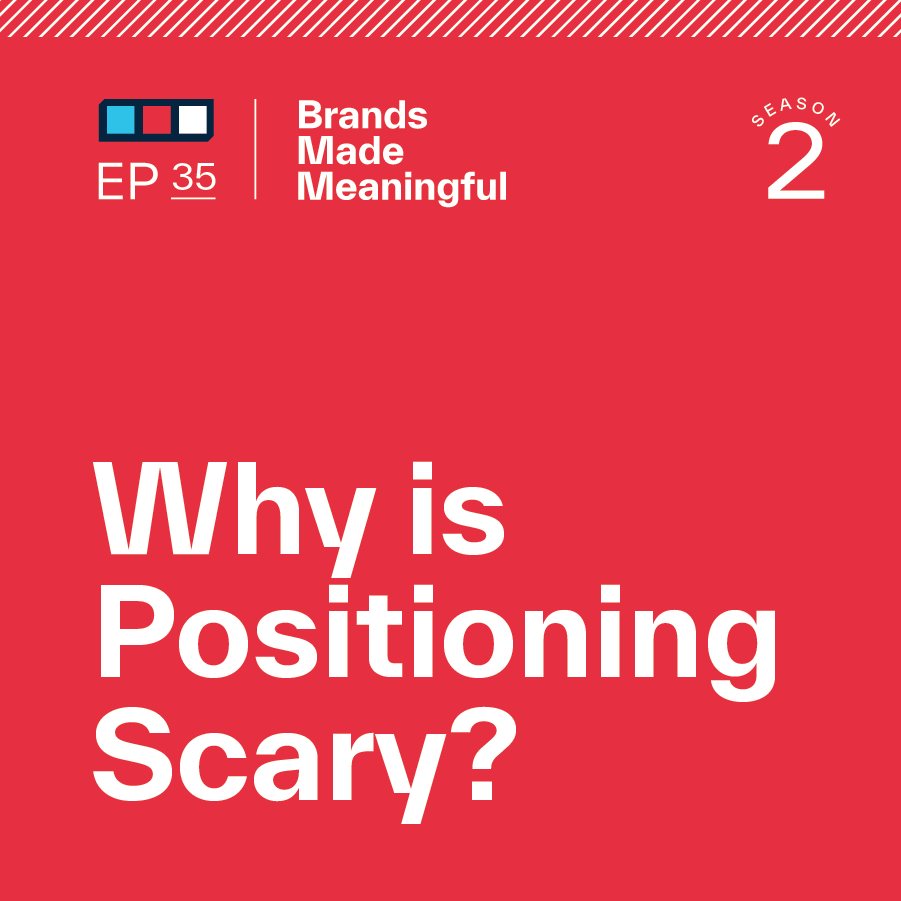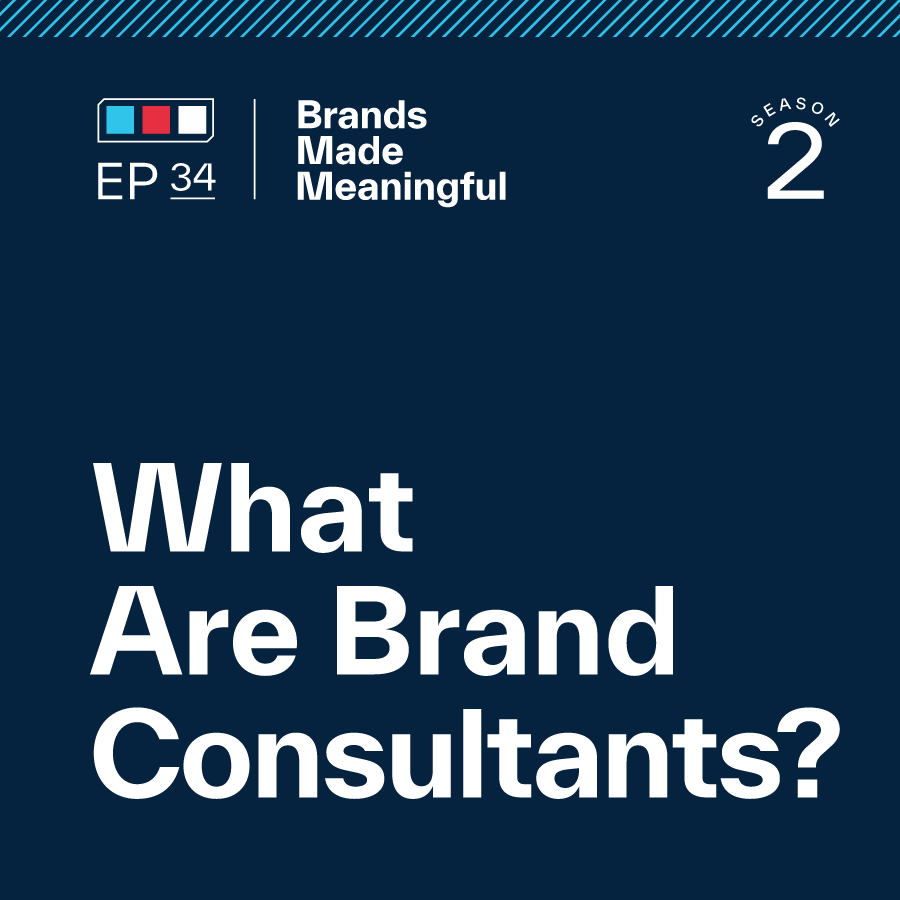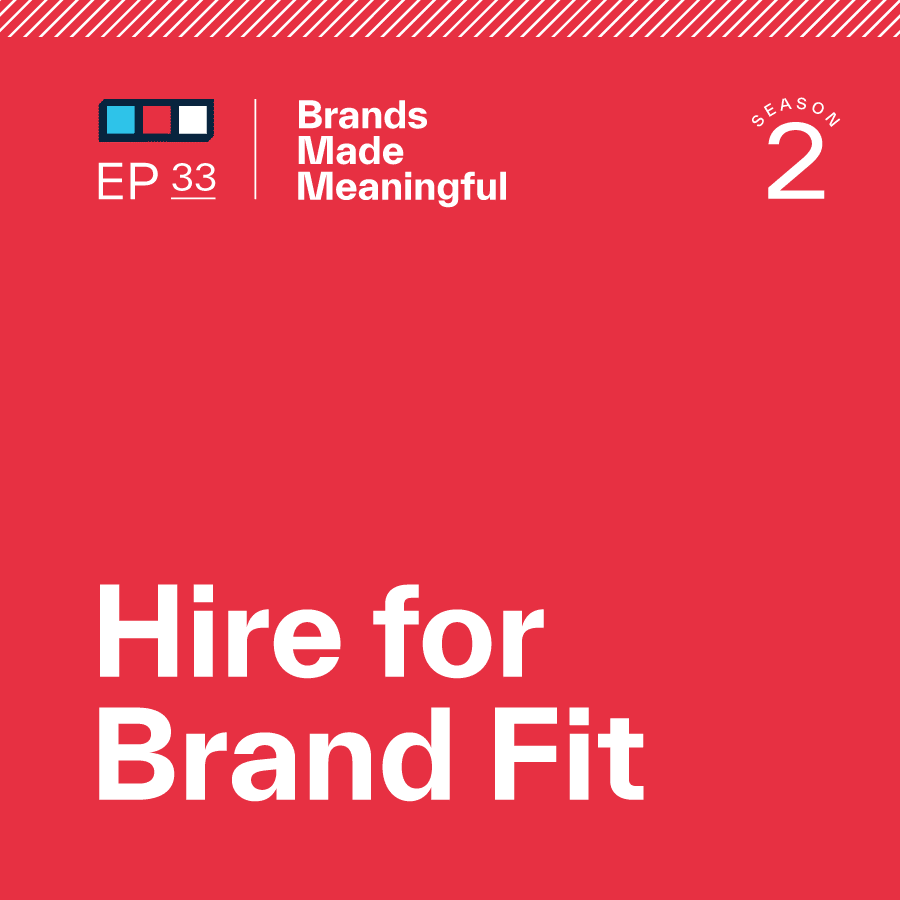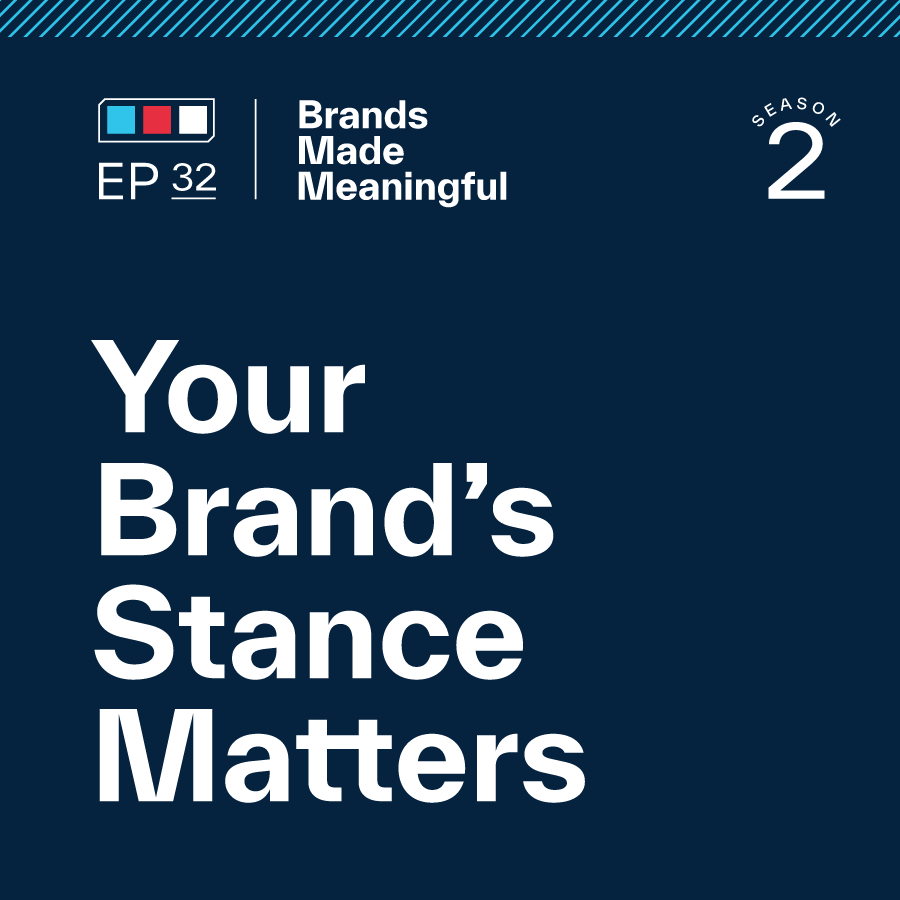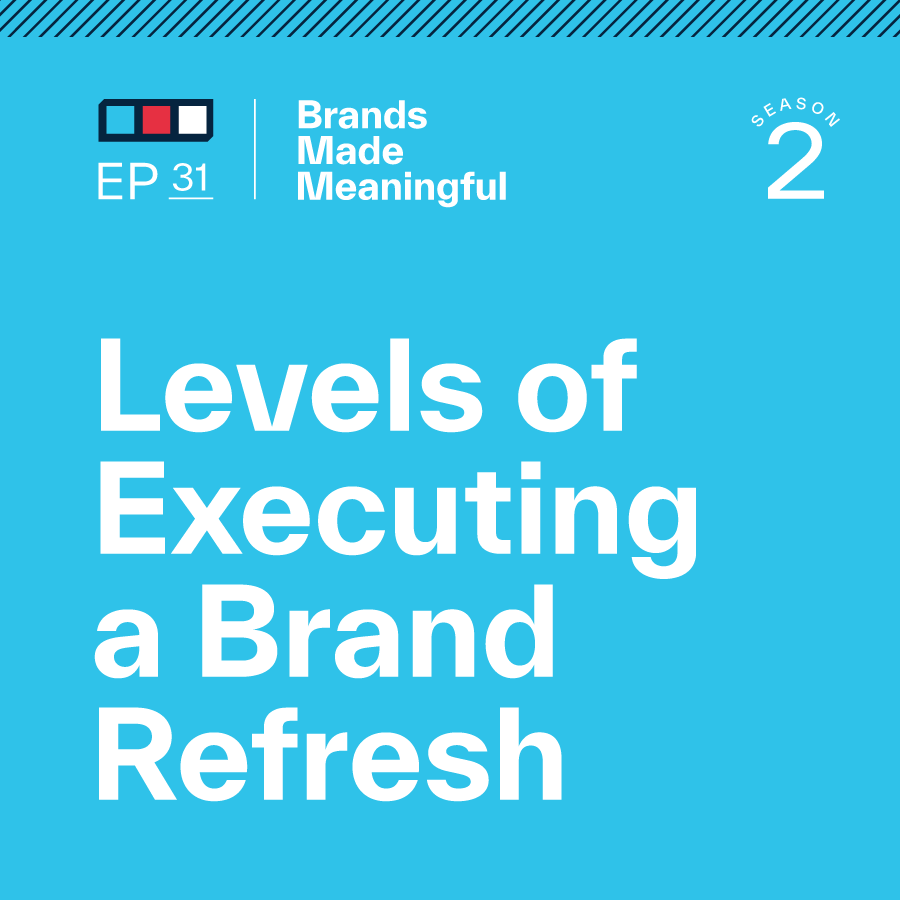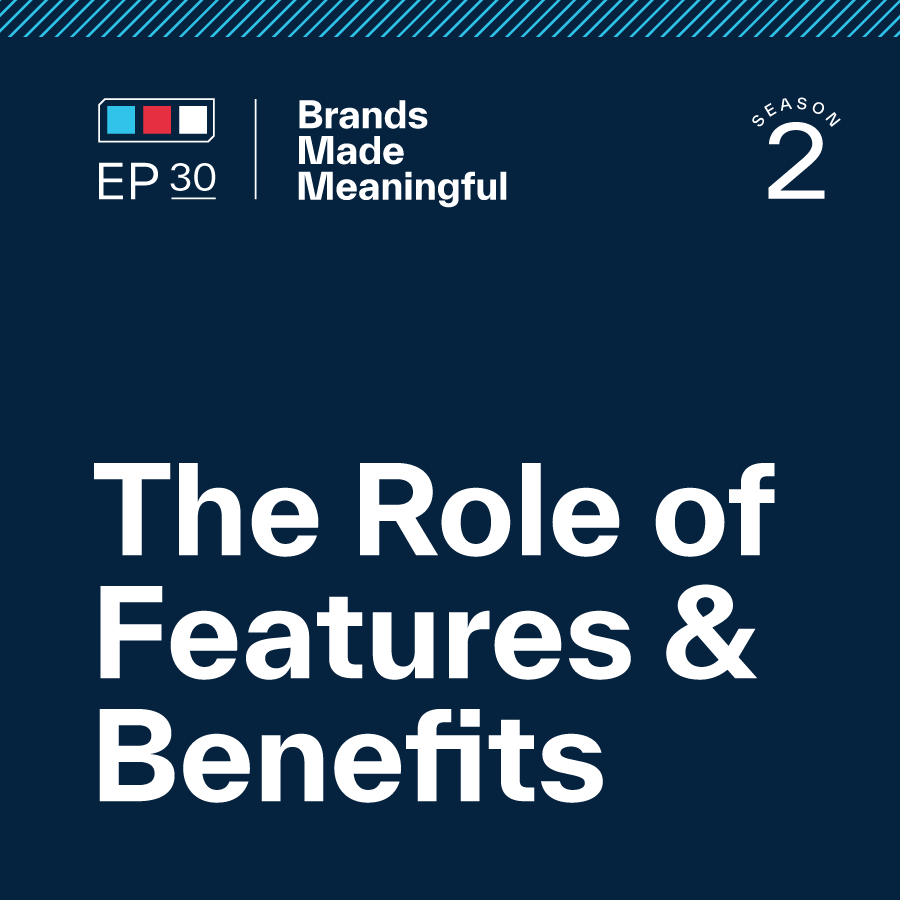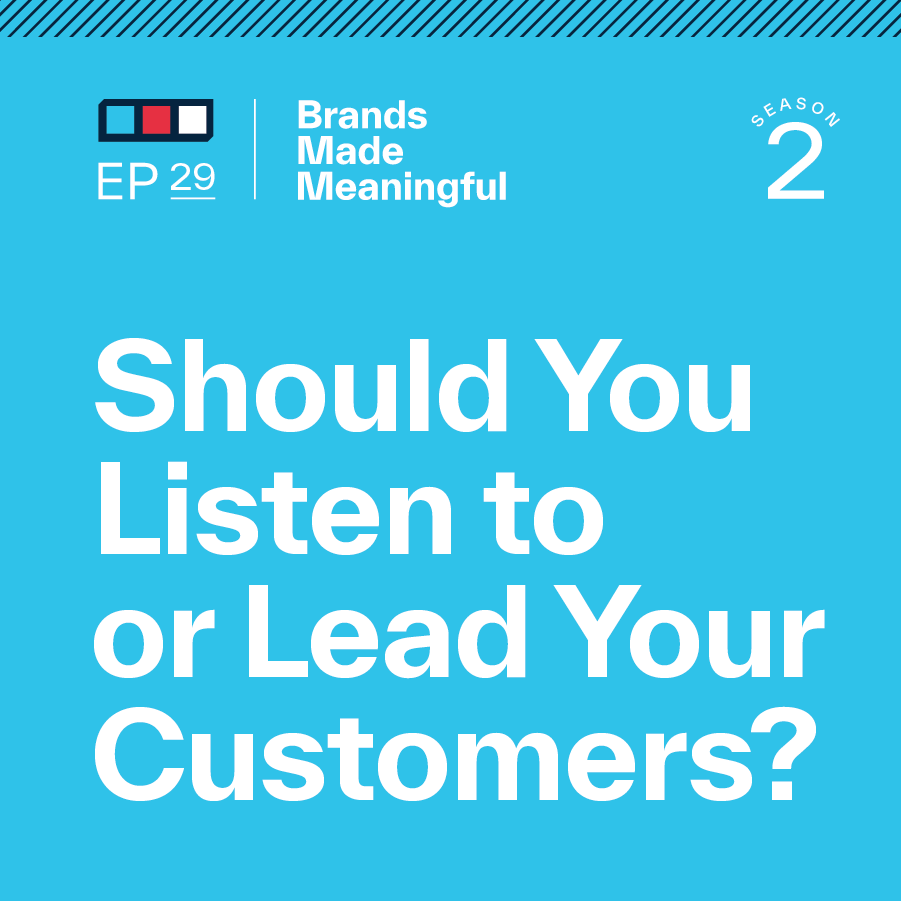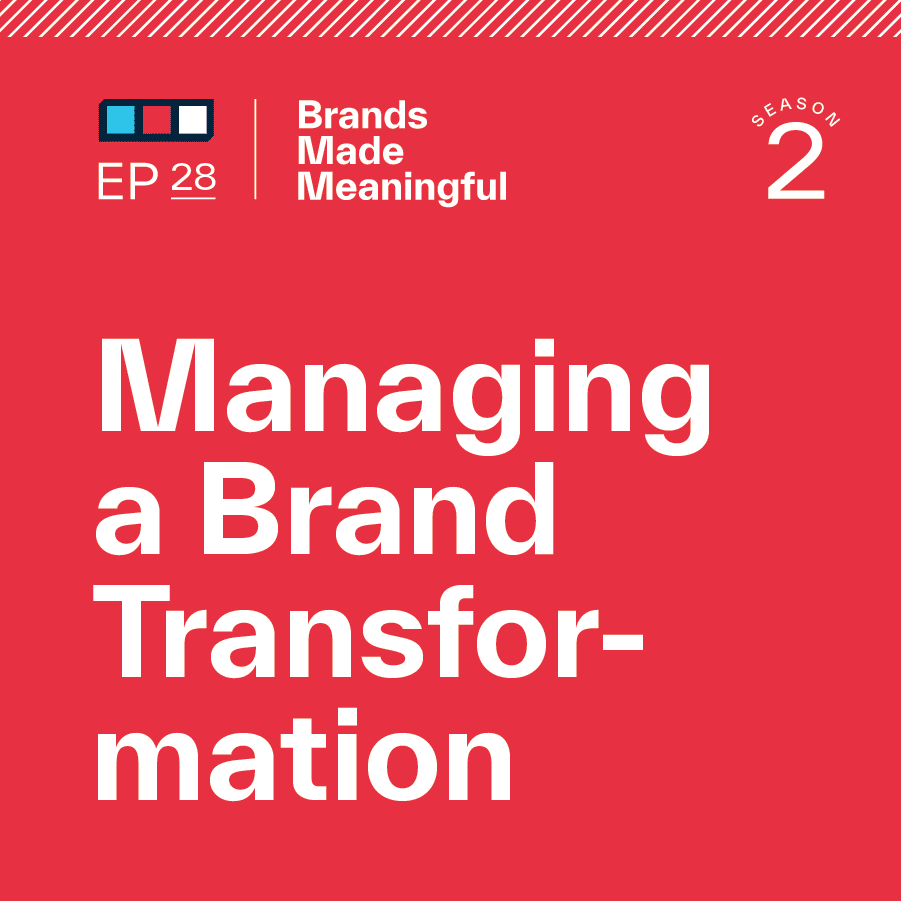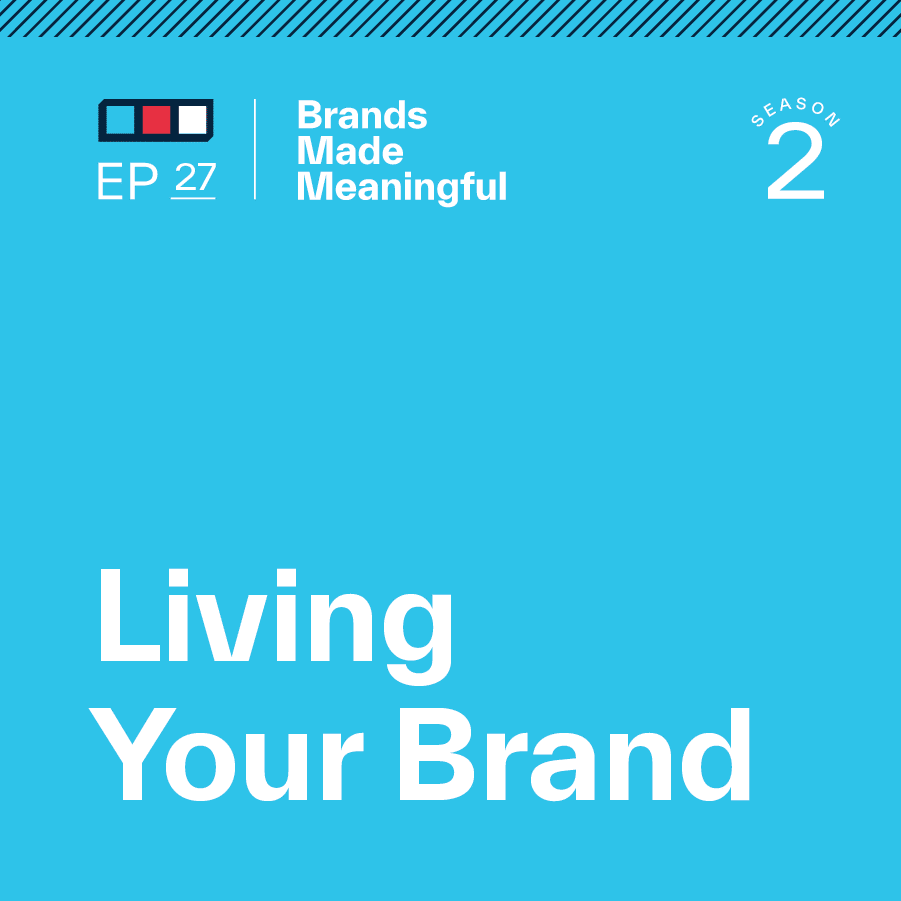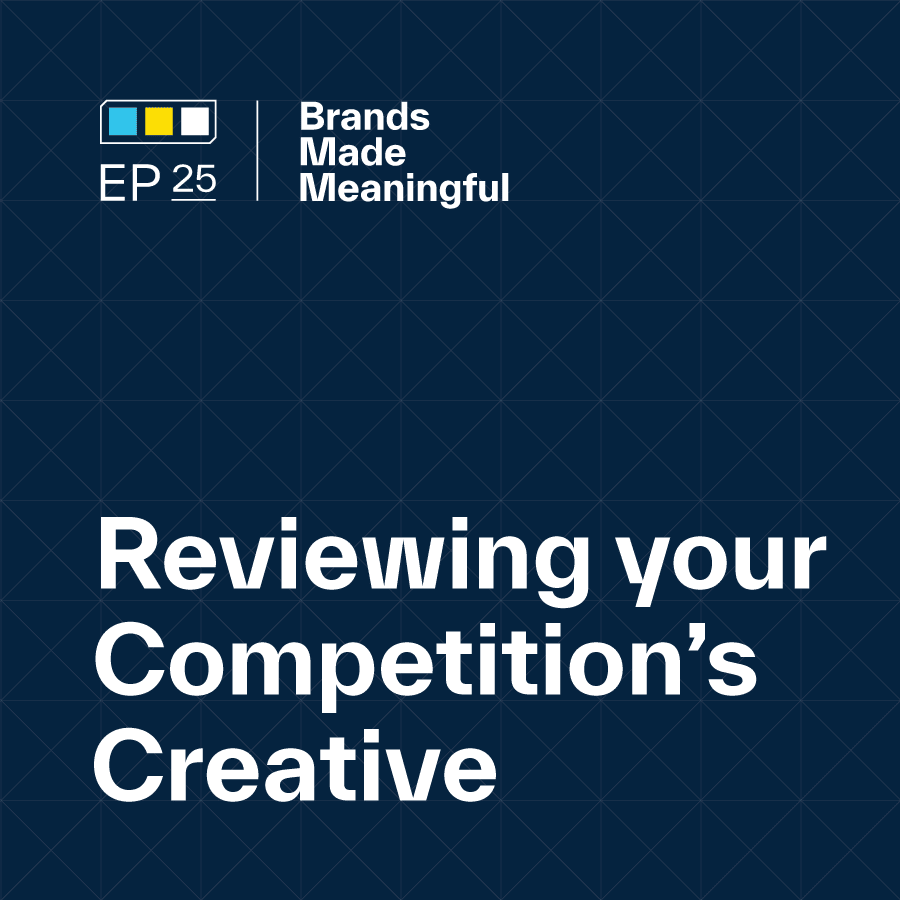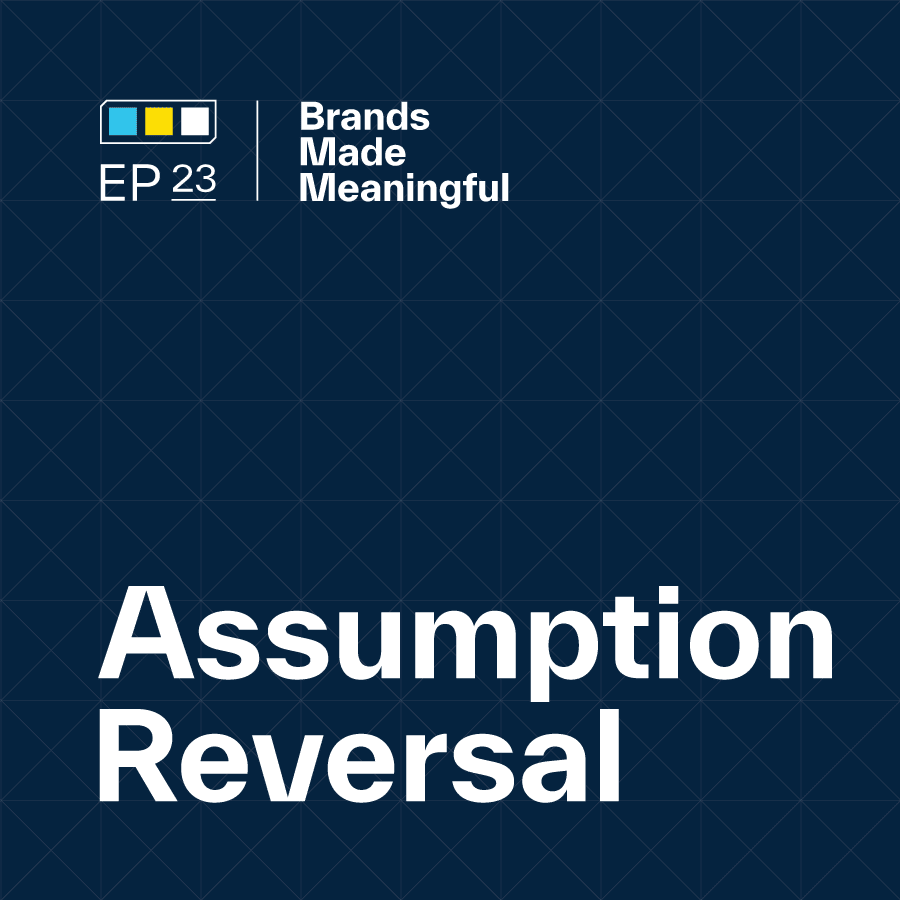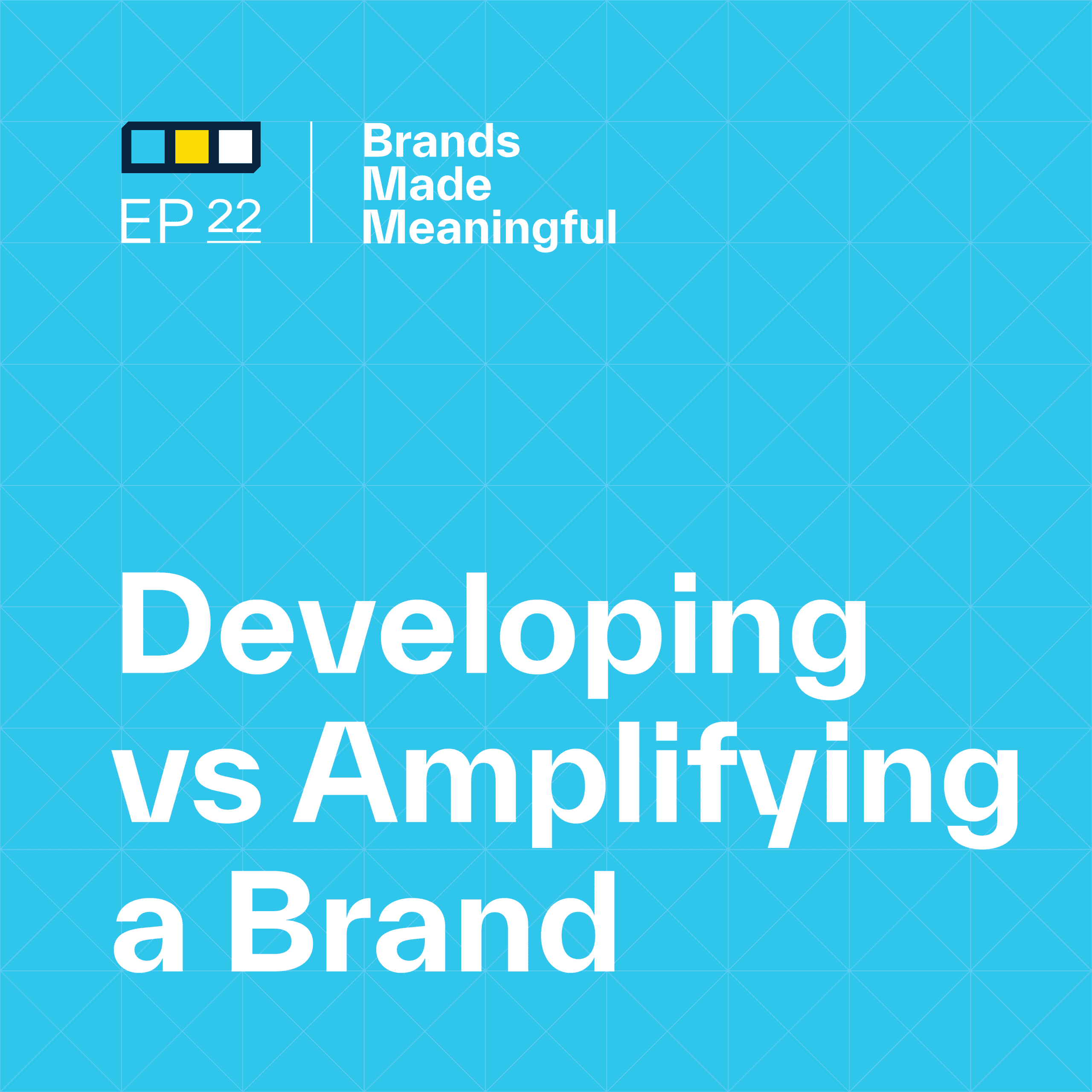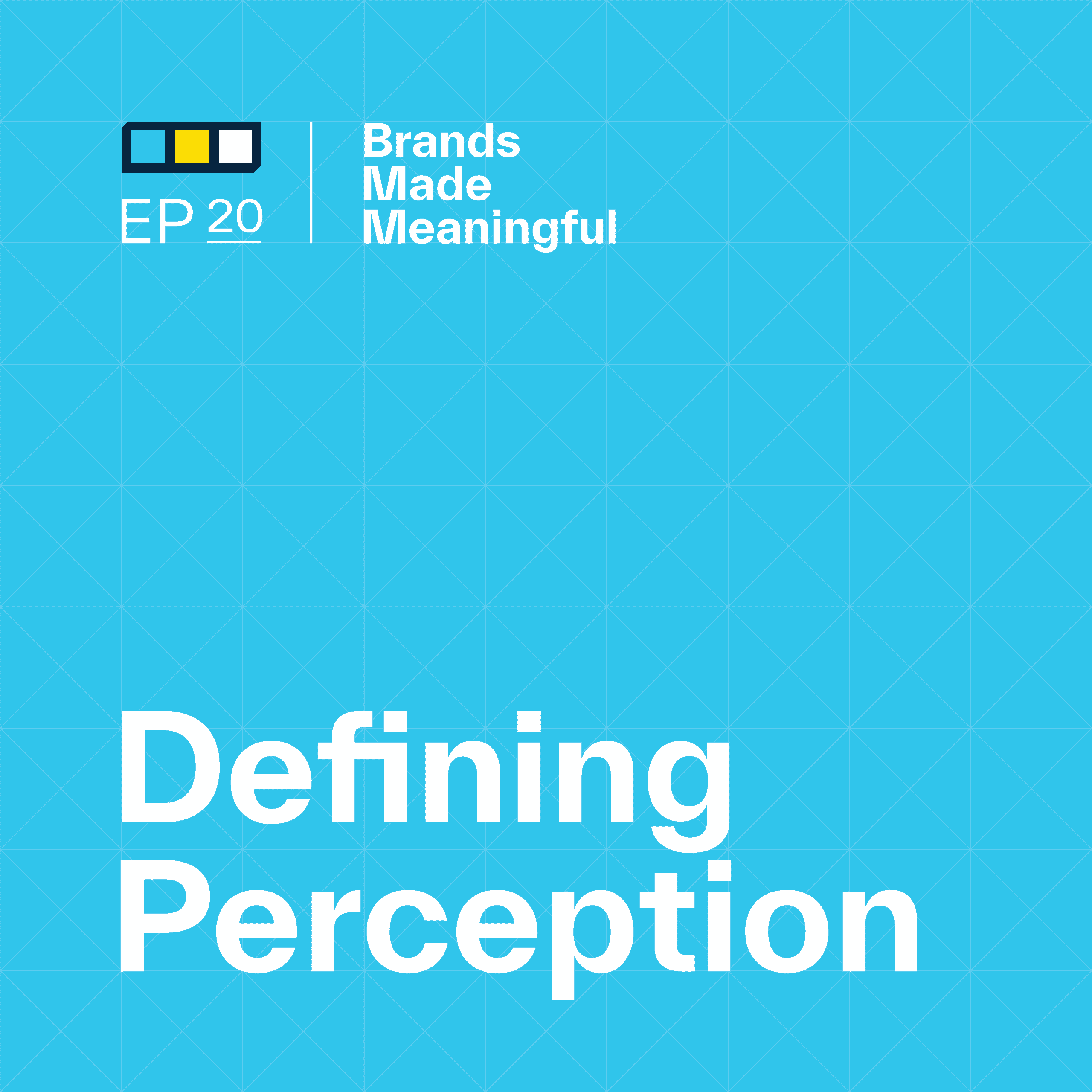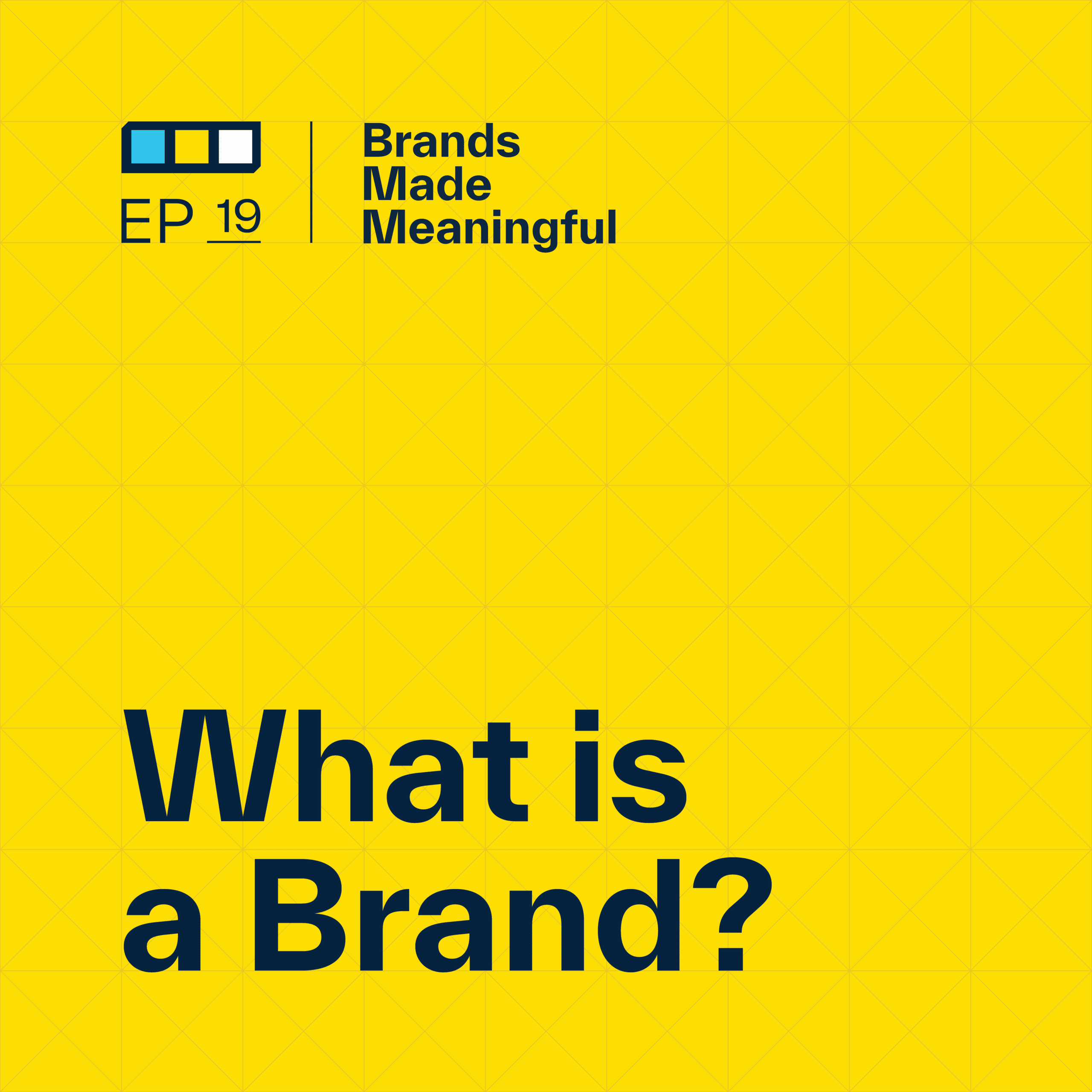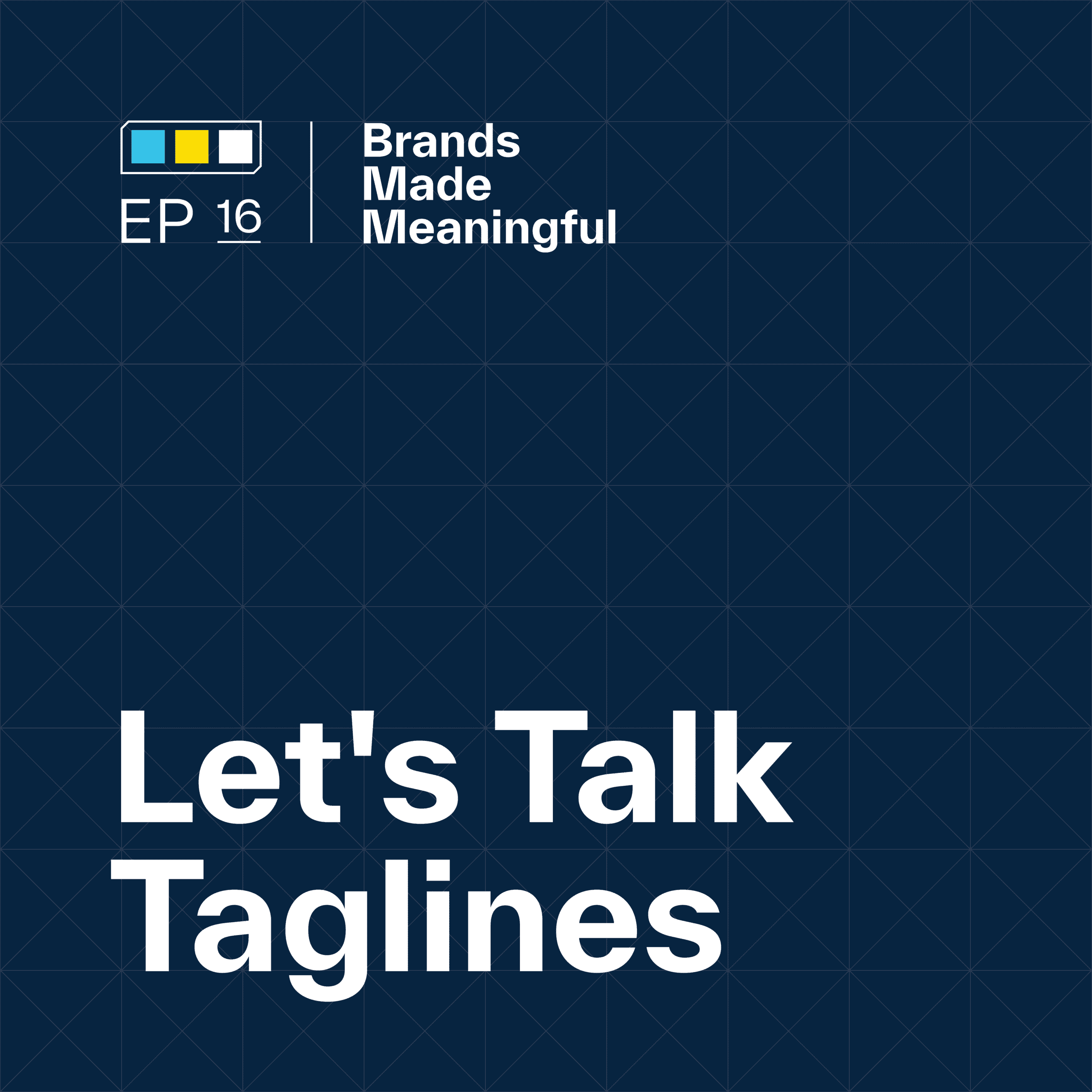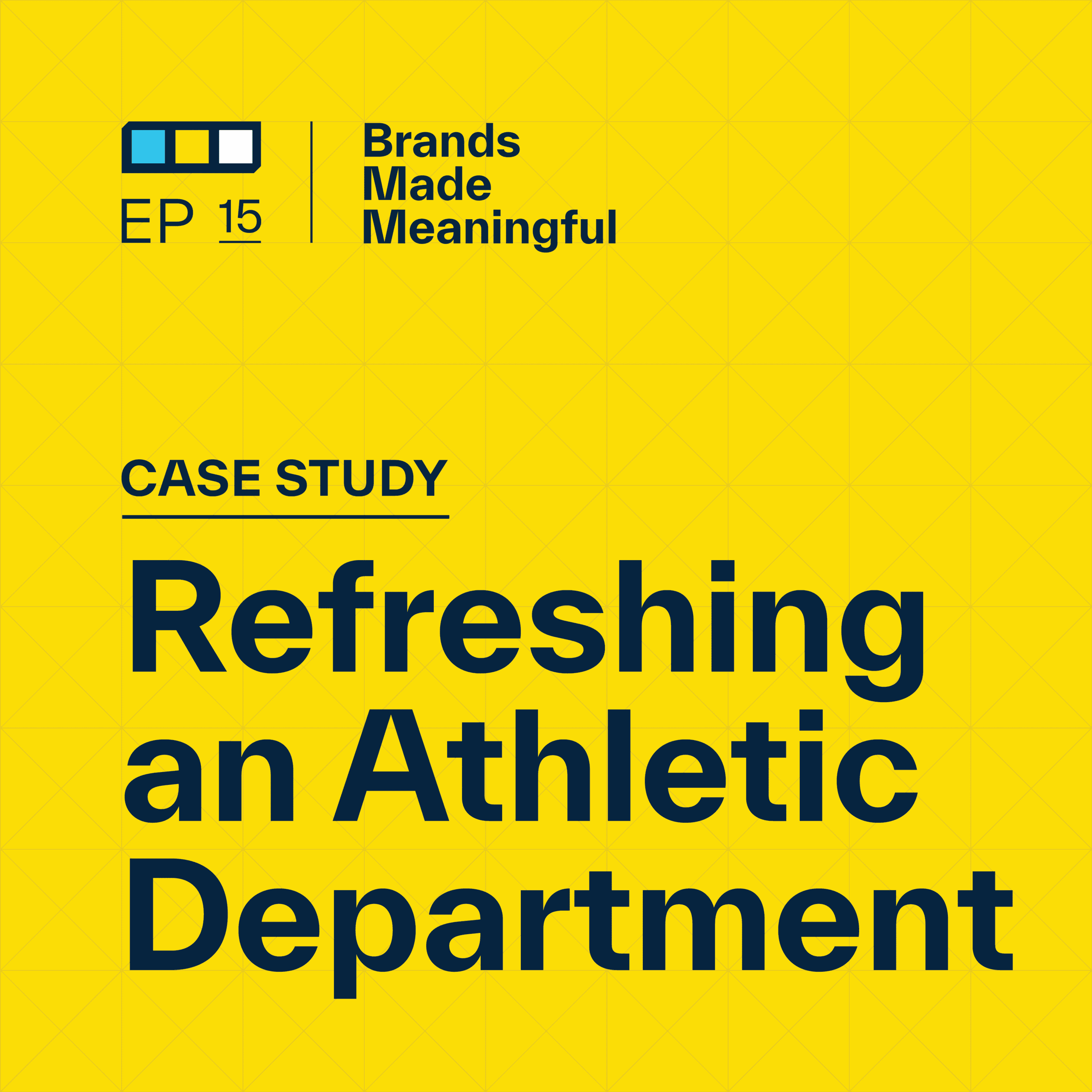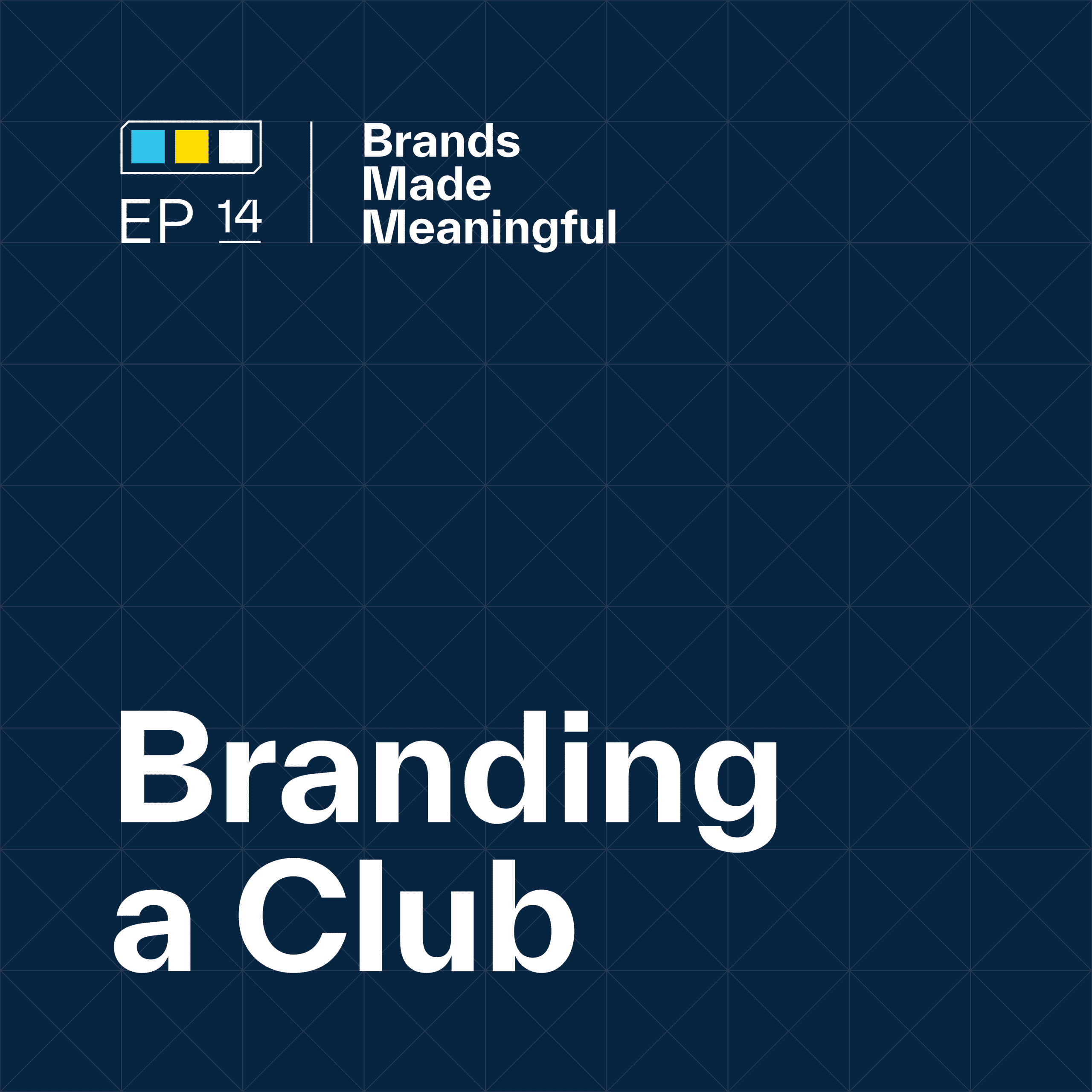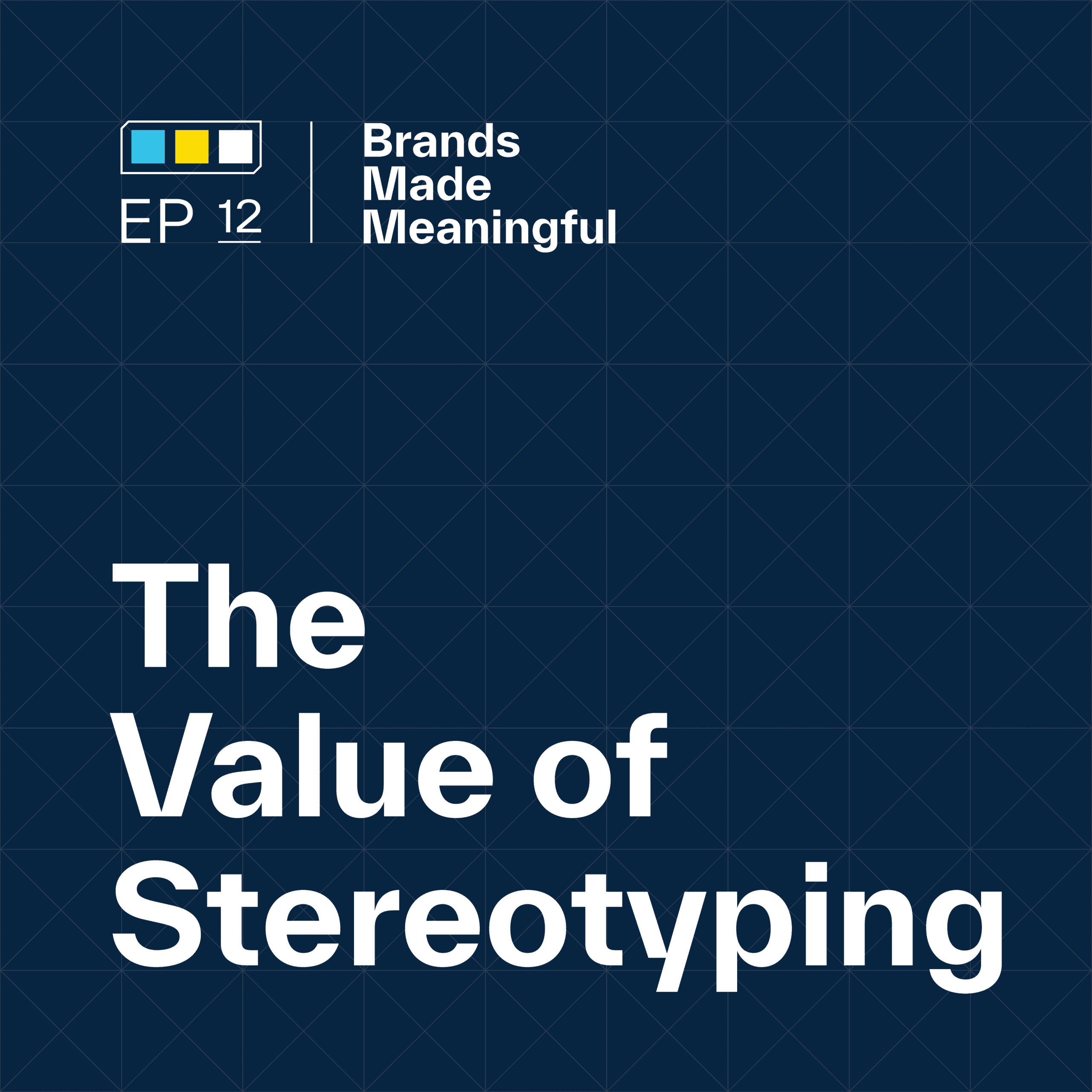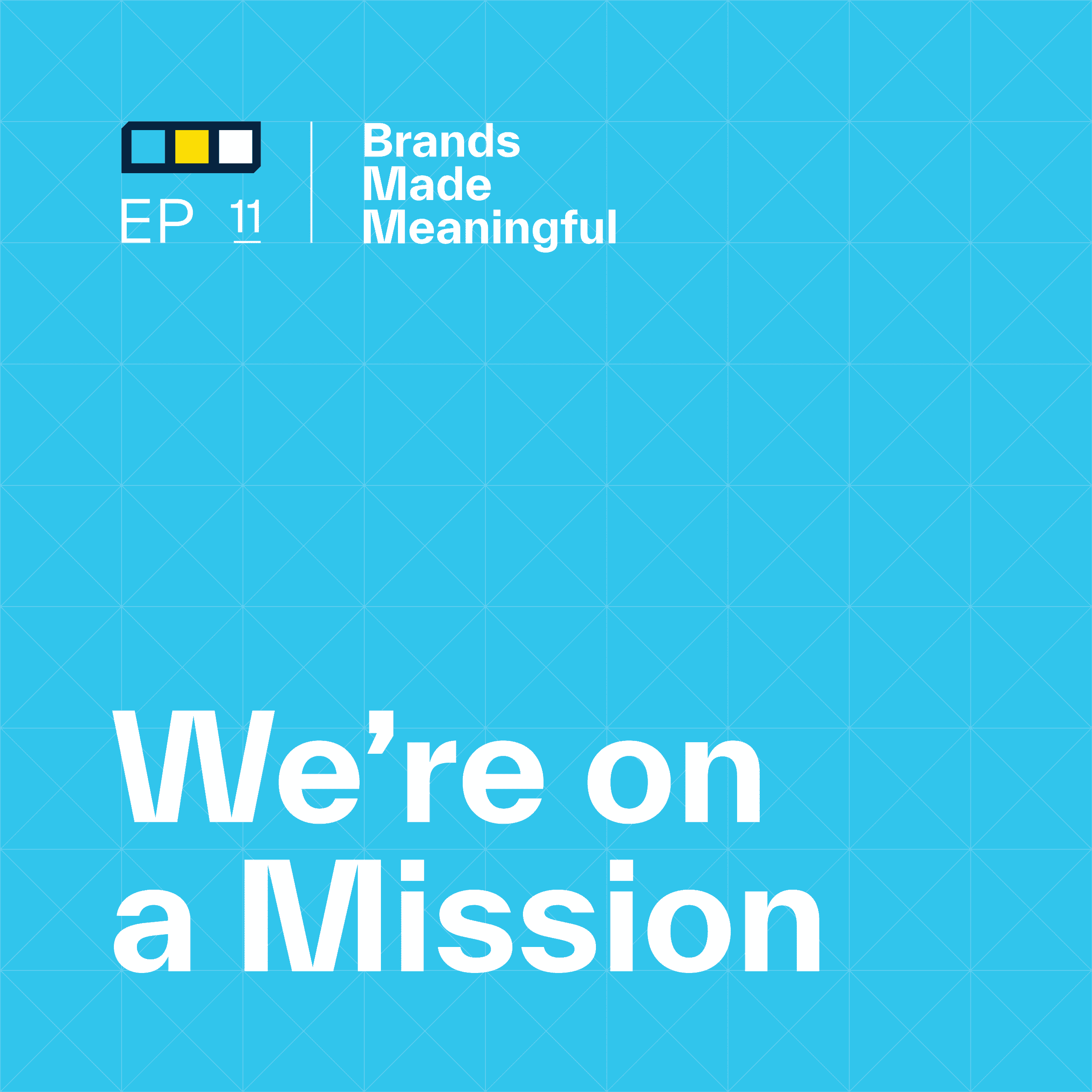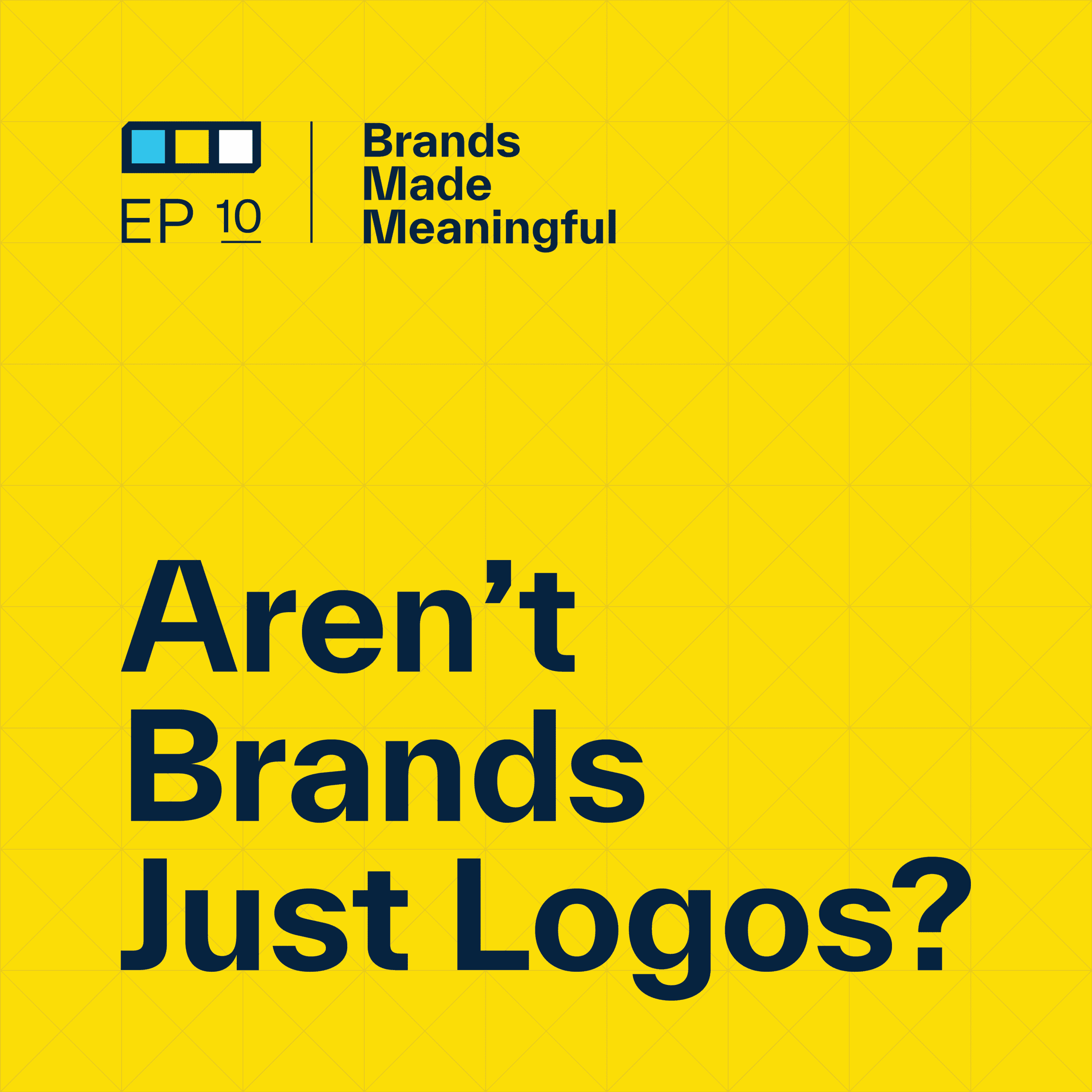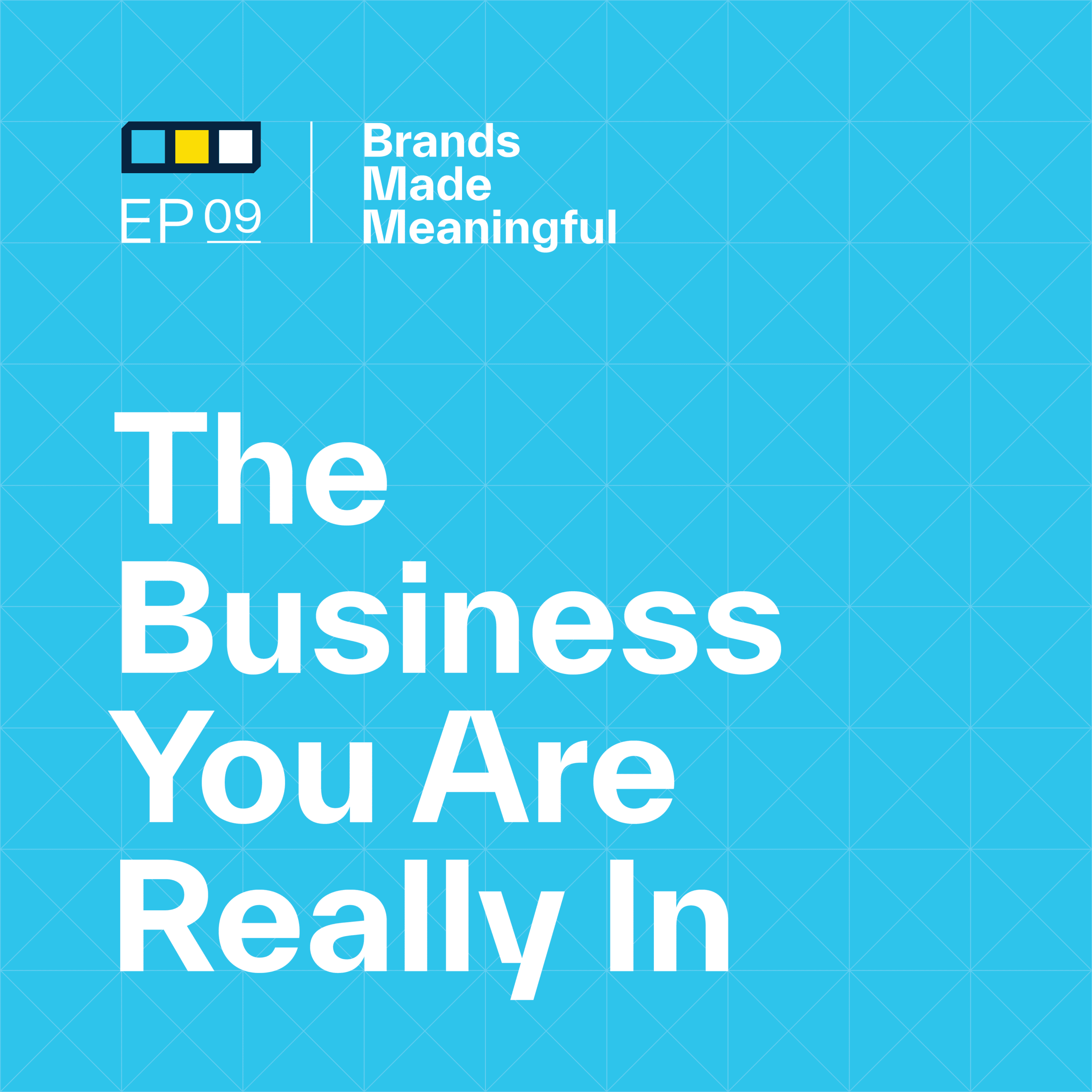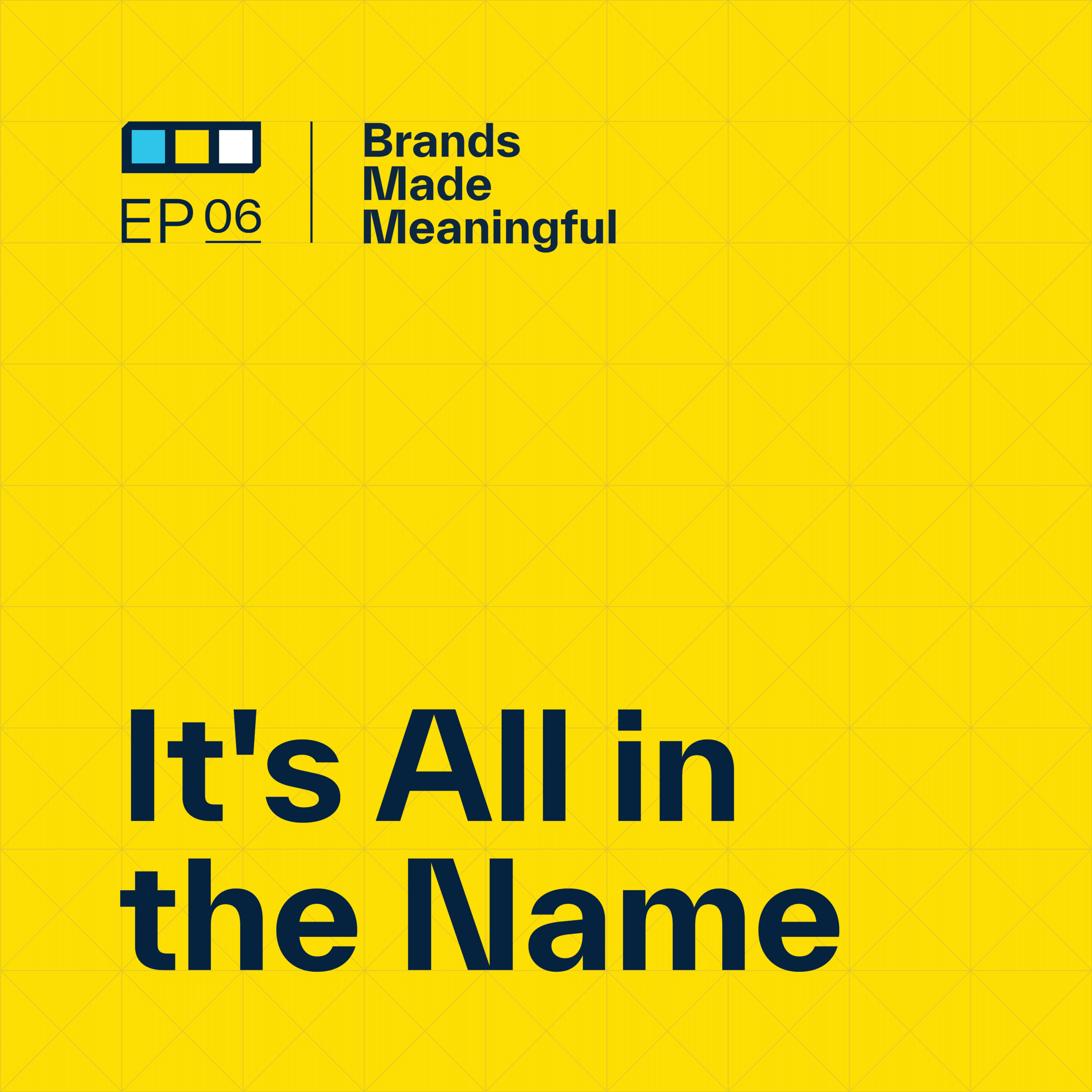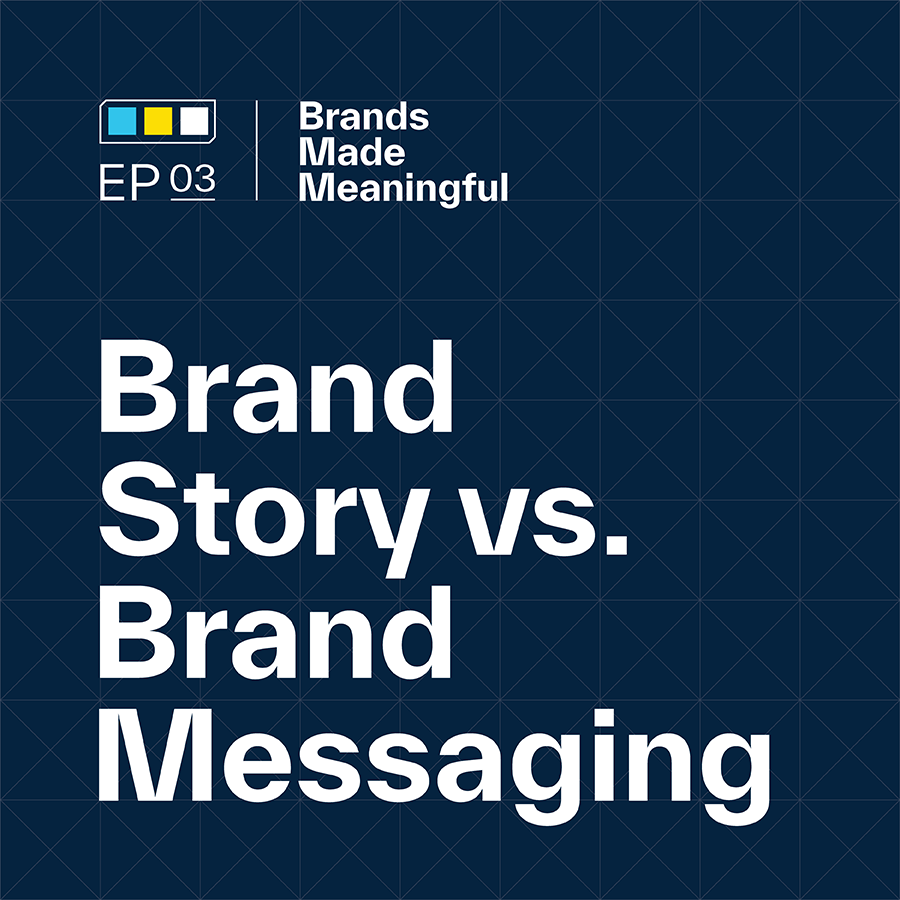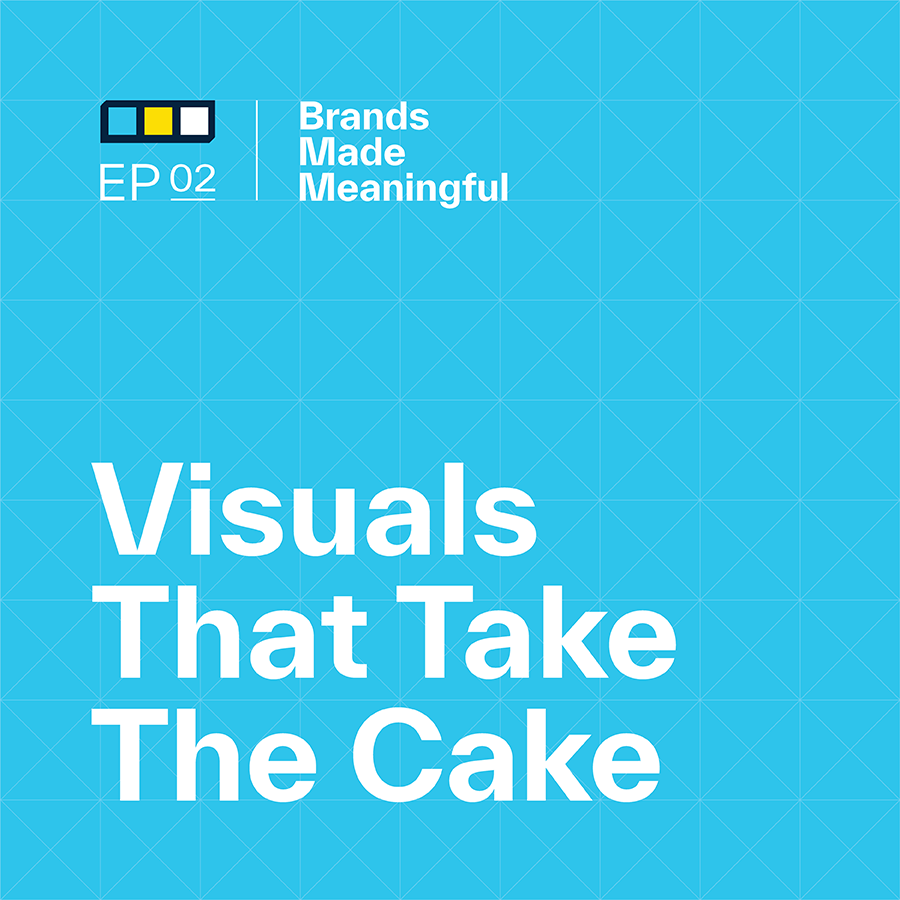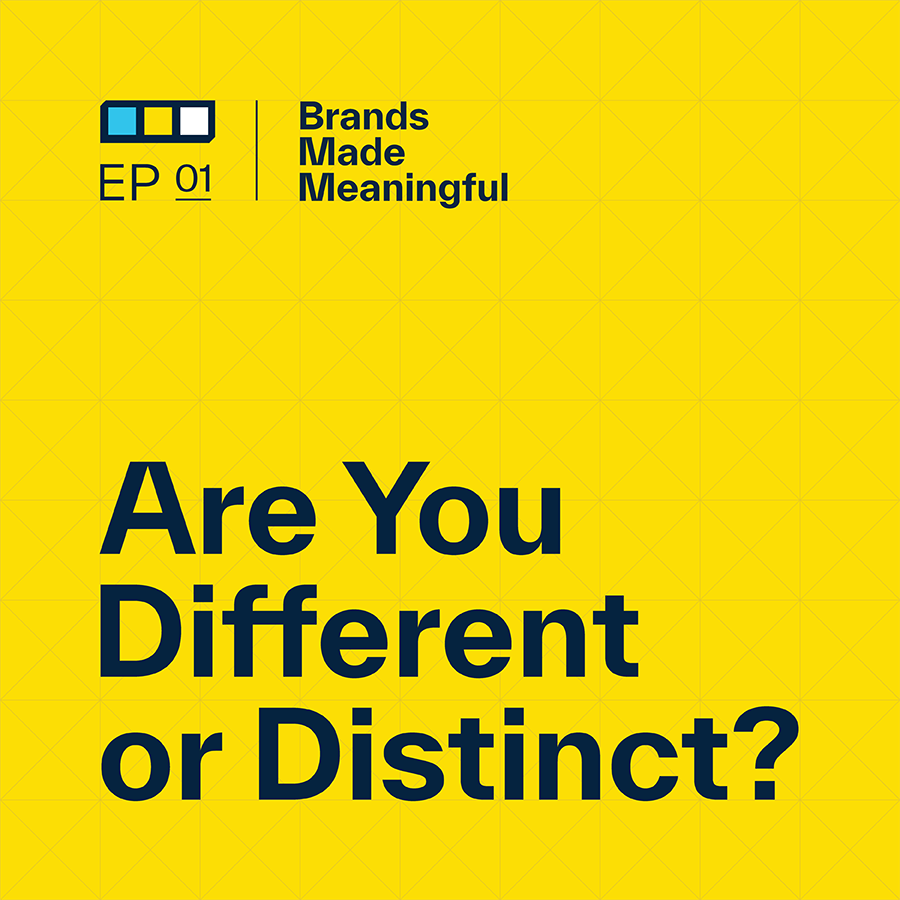EPISODE 60
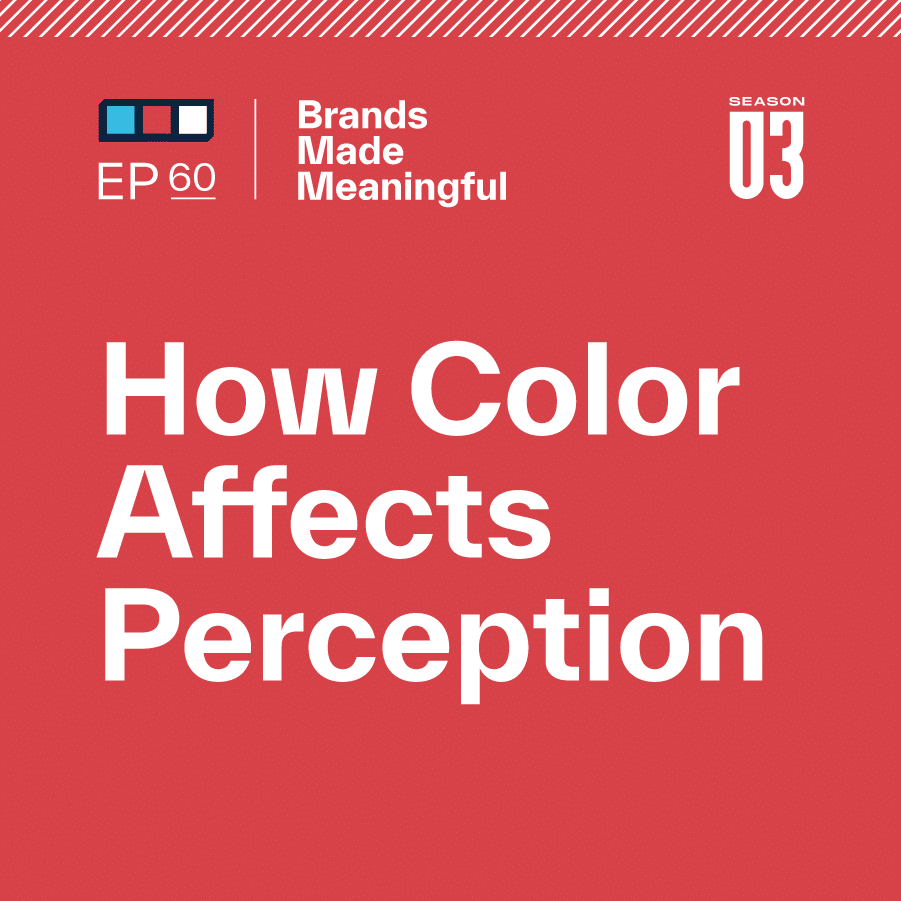
How Color Affects Perception
Episode 60
Derek and Tucker cover how to best convey your business with color.
EPISODE TRANSCRIPTION
We’re talking about how color affects people’s perception, how it affects people’s buying decisions, and how it affects the brand.
Tucker We have a short one today. A colorful one. Color me excited about this one. I just wanted to say that. I wrote that in the show notes and I needed to put that in somewhere, I guess. We’re talking about color. It seems obvious that color affects things. When you paint a room, it makes you feel completely different about that room. But when we talk about brand, a switch in color, or maybe just a shift in color, can make a difference in that perception or in trying to achieve a new strategy for a company or an organization.
Expand Full Transcript
Derek I think for brands that have been developed thoughtfully and intentionally, more work goes into choosing color than I think people realize.
Tucker It’s a big part of the process. Just like the process to build out a new logo has certain steps. We’ve had clients before say, Oh my God, I didn’t know how much thought goes into picking a color that you’re going to use to represent the entire organization.
Derek Think about brands that you know in the world, that you frequent, that you recognize, that you’re fans of. Ferrari is red. Target is red. Starbucks is green. The intention and the thought behind them have some strategy and have some science to what is also a very subjective, but important part of the brand.
Tucker So when we go through our process, and that’s why I say today’s a shorter conversation because I don’t know if we can solve it for people in this discussion, what we can do is start identifying the ways that people can start thinking about how to be more intentional around this brand color. And I want to hone in on the three ways that we think about brand in general – and that’s authenticity, relevance, and surprise – and how color can affect each one of those in different ways. So when someone may be going through this process or thinking about shifting their color, they can come back and say, What do we really want to accomplish with this color change and how are we going to do that?
Derek There’s actually science and psychology tied to color. So as we get into what’s authentic, what’s relevant, and what’s surprising for a specific brand, we’re running that through the filter of what colors are already associated with. We’re adding that data to it. Blue is associated with trust. That’s why a lot of corporations, a lot of banks, are blue. Red’s energy and excitement. It’s also danger. If you think about how colors are used in traffic science, you associate red with stop and green with go. Hospitals and psychology wards are very intentional in the colors in which they paint their walls to be calming and healing. There’s an incredible amount of science behind it. So let’s take as much of that as we can and run that through that three-hour filter.
Tucker And your challenge, what you just said, is red can mean powerful. Red can mean danger. It can mean a lot of things. Yellow means joy, but it also means warning. There are all of these different associations, positive and negative. What matters is how you use it, why you use it, and how it’s going to really affect people. We’re getting down to color psychology. And that’s where it becomes more of a science than an art. And that’s where it’s really hard. So authenticity – I’m going to start there.
Derek Perfect.
Tucker We use authenticity in our process within color specifically to convey things like a sense of place. Maybe you’re working with a private club and they have a specific color that they can own because of their sense of place. Maybe they’re on the ocean and the ocean has a certain hue to it. And that ocean hue really represents the club and all of its aspects and we can leverage that in some way. It also can convey a unique value in some regards. So when we talk about unique value, maybe I’ll go back to that example of an ocean. If that ocean is a unique value to your club, then how do we leverage that within your color palette so that you can be perceived as more oceanside versus your competitors?
Derek The color of the Atlantic Ocean off the southeast coast of Florida is different than the color of the water in San Diego. They both may be in the shades of blue but they’re different which is why we’re talking about being authentic to that place, to that region, and to that area.
Tucke And then when we talk about authenticity within a value set, maybe a core value set, we think about things like what tranquility looks like. What do things like empowerment look like? You can actually associate colors to core values in some regard, or maybe culture, and come back and say, This is who we are. This is kind of how we represent ourselves, and this is the color that really matches that representation.
Derek When we jump into the next one, find the line that also helps us with perception, which should be authentic but should also then be under the next category of relevant to the people that we are trying to represent, both within your organization and also the people outside, whether it’s customers or future members or future prospective employees or customers. What’s attractive and relevant to them too?
Tucker And when we build that relevance to understand what they love, you can understand that this also goes into trends. Sometimes when we leverage market trends, it can be a good thing for us to say, Well, people are really enjoying this type of style or this type of color palette and this is a more trendy or more modern way of looking at it. This is exactly where we would do that to say, This is how we can be more relevant in the marketplace and seem more fresh. We can also leverage this idea of what they have. What do they not have? And that moves more into surprise to say what else is in the marketplace and how we stand out using our color. So sometimes we use color to convey a sense of self to who we are versus maybe using color as a sense of positioning to say who we’re not and what we can be against in some regard.
Derek The ability to leverage color to differentiate you from your direct competitor is sort of baseline, entry-level, check the box that we look at. If all of your competitors are blue, even though you’re a corporation and you want to convey trust, we’re probably going to try to at least explore another color palette that does convey trust but also makes you stand out from that sea of blue.
Tucker So that’s why we pair the three together. So, like you’re saying, our table stakes are really to come in and say, How do we look different so that we’re standing out? I think if everyone’s blue then maybe we should be red – or whatever. But then to say if we were going to be red, why does red really fit who we are? So that it’s not different for the sake of being different, but different for the sake of being us. And that’s super important when people make a shift. We’ve done this with other clients too. I remember a client who actually had the exact same color palette as their competitor, their primary competitor, and they didn’t want to switch everything. And so instead of changing the colors that they used, they just changed how they used them. So instead of red, white, and blue, and maybe the primary is blue and the accent is red and the base is white, we used red as the primary, white as the base, and blue as the accent. And we just shifted that. We didn’t shift the colors they had but we shifted how they had them or how they used them. So it’s not necessarily always a complete 180 where you’re now blue but you’re going to be orange or something like that – completely different.
Derek We’ve also realized through the process that we work on, that we’re also looking to see what’s already working and what’s not broken. In a rebrand or in a brand refresh, if the color has a lot of equity and a lot of positive recognition and association, sometimes it’s a little evolution or adding of an accent or looking at the perception words that said previously when you went through this rebrand, you weren’t vibrant or energetic. But in the last ten years, your organization has shifted younger. Your audience is different and now it’s important that this brand conveys a more vibrant and energetic perception reputation type of brand image. But your color palette still conveys the rest of the perception and the rest of the attributes you’re looking for. So it might just be adding a subtle accent to the mix that’s complementary and lets us start to introduce that in a comfortable way. We’re going through this with one of our customers who’s had a very corporate-safe color palette for a very long time. And they see their opportunity in their market as being disruptive. Of being completely different, of being anti in some ways of the way that it’s always been. And when you look at the companies that are trusted and secure and established in that industry, they’re relatively safe and corporate. So we put together a visual mock-up of this multi-shades of dark blue color palette and we shifted it to reds and oranges just as an exercise to see. We’re not solving today necessarily. But it was a really interesting exercise to understand what that organization that has already associated with one very specific color palette could look like. Imagine if the Los Angeles Lakers changed from purple and gold. It’d be arresting. And that’s not something we would recommend. But imagine just the process. You know, even though that purple and gold sometimes over the years, given the trends, maybe shifted a little darker, a little richer, a little brighter, to match those market trends. But, for the most part, it’s never changed.
Tucker There’s one story I want to tell from a client’s perspective that I think really encapsulates how we look at color. And it’s with a client called Game One. They did a full brand overhaul and a big part of it was that they were navy at the time. They wanted to change to something and they didn’t know what. And so when we went through our interview process, we talked through almost every single person who either has to use the brand or sees the brand in some regard. They sell merchandise, they sell apparel, and they sell equipment to high schools and small colleges. And they have all these reps that go to all these colleges and all these schools and they have to show up and present themselves and do all this. What we found out in our process was the thing that was really hindering the salesperson from feeling like they could walk into any school confidently and do all that was the color of the brand that they had because navy blue might be a primary color of some schools but it might actually be the rival of another school. And so wearing navy blue in some areas is proud, stand tall, I feel like I’m a part of this. Wearing navy blue in other schools is, Oh my God, let me get in and get out quick because these people don’t love this color. And there’s this inherent ability to say that was amazing to have. Then we switched their colors to a black, white, and silver color palette. It wasn’t just an aesthetic change, it was a sales change. We have to change the colors so we can sell to any school that could have us. And to me, that’s the power of color that opens more doors in some industries.
Derek It was also very bold. I’m looking at our process boards for Game One that are right behind you on the wall. When we landed on their perception words, one of those words was bold. To actually choose to not have color and to not add color and to be neutral. Not only are the clients meeting the schools that we represent and sell product to, but also all the brands that they sell. They sell Under Armor, Adidas, Nike, McDavid, and all these other product lines, consumer product lines, most of which have their own brand color also. So it was a very interesting strategic choice that we landed on to basically say, let’s not have any distinguishing color. Let’s be neutral and let those colors be our supportive palette.
Tucker So I think that transitions us nicely to wrapping up. To me, color is a tool. We say brand assets all the time. Color is an asset. It’s something that you can leverage in all of these areas. And if you’re using it right, it’s not only shaping your organization from the inside saying we represent this color and it’s great and I love it, versus shaping the consumer perception of who we are and what we do and why they should care. And that’s a big part of this.
Derek And one clarifying point – black and white are colors.
Tucker Yeah.
Derek So I’m not saying they’re not colors. They’re very powerful colors when used right. When you have the right color palette for your brand, it’s incredibly powerful for you, not only from a sales standpoint but also when representing who you are in the story that you’re trying to tell.
Tucker We get through this all the time. Not making a decision is a decision, and I would say that’s the same thing with color. If you have navy as your primary color, defaulting to white as your base color is a decision. You don’t always have to do that. I think that there are a lot of people who think you have to have white and black in your brand. That’s not true. We’ve done a lot of brands that don’t have that at all. It tells their story differently than just defaulting to what you think you have to do.
Derek Our primary color here for years was orange. And a handful of years ago, after going through our own rebrand, we realized that orange was not telling the right story. That vibrant color for us now is red. And there was a lot of thought and strategy but we’ll save that for another conversation. But it takes a little bit of bravery to make a change, as long as the change is thoughtful and strategic.
Tucker Change is hard. Think about that. Think about when you changed from orange to a different color. I know at that time you said you were sick of the orange. But it had been a long time. You get used to it. It’s on the walls. It’s on some materials. It’s on your desktop. It’s everywhere.
Derek Imagine going to high school and you’re the Hornets and your color is green. And then you shift over to the Trojans because your parents move and you spend your last two years in blue and gold.
Tucker It’s just different.
Derek It would be completely shocking. But appropriate and relevant to those brands and the emotional associations that grow with those colors, with those brands, over time.
Tucker All right. Good conversation.
Derek Let’s pause here and we’ll come back offline. We’ll talk more about color another time. Maybe down the road, we’ll get into some how-to, some solves. We’ll pull back our process and reveal some of the things that we do that help us have those thoughtful conversations with our customers. We’ll save that for another time.
Tucker That would be a long one. All right. Next time.
Derek Sussner is a branding firm specializing in helping companies make a meaningful mark, guiding marketing leaders who are working to make their brand communicate better, stand out, and engage audiences to grow their business. For more on Sussner, visit Sussnercom.
More Episodes Like This
Building Brand GuidelinesEpisode 65
Derek and Tucker show us how to build infrastructure guidelines to unify your brand experience across the board.
Club Identity SystemsEpisode 64
Derek and Tucker cover what Identity Systems entail and how to discern between internal and external methodologies.
Navigating Branding With a BoardEpisode 63
Derek and Tucker bring clarity to uniting your company under one cohesive vision.
Putting a Committee TogetherEpisode 62
Derek and Tucker assemble your need-to-know facts when putting together your committee.
The Guiding Principles of Private ClubsEpisode 61
Derek and Tucker go over the top ways private clubs can find the balance between pleasing old members while attracting new ones, all while making moves towards the future.
How Color Affects PerceptionEpisode 60
Derek and Tucker cover how to best convey your business with color.
Brand EcosystemsEpisode 59
Derek and Tucker break down how to craft effortless experiences when considering your brand as a whole.
6 Types of Brand TransformationEpisode 58
Derek and Tucker dive into 6 distinct types of transformations for a wide range of brands.
Tournament Branding For ClubsEpisode 57
Derek and Tucker discuss designing and delighting your club members with tailored events.
Brand Promoters & DetractorsEpisode 56
Derek and Tucker discuss how high level promoters increase your NPS and how to turn the tides on your detractors.
The Loudest Voices in the RoomEpisode 55
Derek and Tucker talk about gathering feedback while prioritizing every voice.
Determining A Primary AudienceEpisode 54
Derek and Tucker discuss if and when you should be honing in on your audience vs. casting as wide a net as possible.
Branding For ExclusivityEpisode 53
Derek and Tucker discuss the intricate process of naming your brand.
Measuring Brand SuccessEpisode 52
Derek and Tucker discuss how we measure our success in branding and a few key KPIs that help us understand our impact.
Branding For ExclusivityEpisode 51
Derek and Tucker breakdown how brands can create the perception that they are exclusive and only for a certain type of consumer.
What Makes A Brand SurprisingEpisode 50
Derek and Tucker break down the Sussner formula that we believe leads to a surprising brand.
Breathe Life Into Brand TraditionEpisode 49
Derek and Tucker discuss the intricacies and common pitfalls of branding for Private Golf Clubs.
They Key of Visual DifferentiationEpisode 48
Derek and Tucker break down the importance of differentiating your brand on a visual level.
Branding For Private GolfEpisode 47
Derek and Tucker discuss the intricacies and common pitfalls of branding for Private Golf Clubs.
Dealing With An Identity CrisisEpisode 46
Derek and Tucker breakdown how to identify and remedy a brand's identity crisis throughout thoughtful and intentional brand management.
Branding vs MarketingEpisode 45
Derek and Tucker discuss the differences between Branding and Marketing and how to make the two compliment each other.
Build Your Brand's FoundationEpisode 44
A brand's foundation is a critical element in being successful in the long-term.
Building a Constructive Branding ProcessEpisode 43
Derek and Tucker break down the steps required to build the most constructive and meaningful branding process.
What Makes a Brand Relevant?Episode 42
Relevance is a key piece of a brand's identity for creating clarity and connection.
Your Right to WinEpisode 41
Derek and Tucker discuss the “Right to Win” and the odds of your brand's success within your target market.
An Intro to Sub BrandingEpisode 40
Derek and Tucker discuss the nuances of developing sub-branding and strategies.
Conquer Branding FearsEpisode 39
Derek and Tucker dive into how to overcome the fear of change and the nature of constant refinement of your brand.
Balancing Strategy & DesignEpisode 38
Great strategy is a necessary foundation for great design—and great design brings great strategy to life.
Branding PrioritiesEpisode 37
Branding priorities are the actions and initiatives that shape or enhance a brand's identity, perception, and market position.
Invest in Your BrandEpisode 36
Investing in your brand benefits your company as a competitor in the marketplace, builds trust with customers, increases perception of quality, and drives employee engagement.
Why is Positioning Scary?Episode 35
Narrowing the brand's position is really a strategic decision to focus the brand's offerings, messaging and target audience on a specific niche or segment within the market.
What Are Brand Consultants?Episode 34
Derek and Tucker discuss the importance of hiring expertise with a wider breadth of knowledge than just visuals.
Hire for Brand FitEpisode 33
Hiring people that fit your brand is key in order to maintain brand authenticity, positive culture, and consistent messaging.
Your Brand’s Stance MattersEpisode 32
Your stance can help define your brand from a core level and make branding, hiring, and marketing not only easier, but more meaningful.
Levels of Executing a Brand RefreshEpisode 31
If you have a brand strategy in place, how do you execute it?
The Role of Features & BenefitsEpisode 30
Derek and Tucker discuss the importance of features and benefits within the context of branding, selling, and marketing your products and services.
Should You Listen To or Lead Your Customers?Episode 29
Within the challenge of any rebrand is the challenge of managing customers' perception of change.
Managing a Brand TransformationEpisode 28
Episode 28 discusses the highlights and challenges of rolling out a new brand, both internally and externally.
Living Your BrandEpisode 27
Your brand is not this shiny trophy on the shelf. It is something that you are molding every single day.
What Makes a Brand Authentic?Episode 26
Season 2 starts off with a discussion about building authentic brand experiences, both internally and externally.
Reviewing your Competition's CreativeEpisode 25
Derek and Tucker discuss the process of reviewing your competitors' creative strategy to better position your brand within the market.
Interviewing your Audience for InsightsEpisode 24
This episode details the process and benefits of interviewing your audience as part of the branding process.
Assumption ReversalEpisode 23
Derek and Tucker discuss how we change our thoughts and get into a different mindset to refine and revise our branding.
Developing vs. Amplifying a BrandEpisode 22
Another way to say it is, development is building and crafting your brand story, and amplification is then telling it.
Refreshing a Sporting Goods BrandEpisode 21
This episode shares the steps behind Sussner’s work in refining the Shock Doctor brand.
Defining PerceptionEpisode 20
Derek and Tucker discuss the positive and negative impacts of brand perception.
What is a Brand?Episode 19
Derek and Tucker discuss what defines a brand and what makes them successful.
Branding Golf Courses vs Golf ClubsEpisode 18
Derek and Tucker further hone in on golf course design.
Refreshing a Golf CourseEpisode 17
Derek and Tucker discuss the bar for golf course design – and how to push past it.
Let’s Talk Taglines Episode 16
Derek and Tucker talk taglines in today's episode.
Refreshing an Athletic DepartmentEpisode 15
Derek and Tucker sit down today to discuss what logos mean within branding.
Branding a Club Episode 14
Derek and Tucker discuss how to brainstorm branding a club.
An Intro to Internal Branding Episode 13
Derek and Tucker discuss the power behind internal branding.
The Value of Stereotyping Episode 12
Derek and Tucker sit down today to discuss the meaning of stereotyping within the branding world.
We’re on a Mission Episode 11
This episode digs into the rallying cry for the greatness your team is going to accomplish.
Aren’t Brands Just Logos? Episode 10
Derek and Tucker sit down today to discuss what logos mean within branding.
The Business You Are Really In Episode 09
Derek and Tucker sit down today to discuss how to discover what business you are really in to better understand your mission statement.
Clarity of Vision Episode 08
Derek and Tucker discuss the importance of looking ahead towards the big picture to better hone the purpose behind what we do in the now.
Branding B-2-B Environments Episode 07
Derek and Tucker discuss the Branding of Spaces.
It’s All in the Name Episode 06
Derek and Tucker discuss what a name can say - and not - about your company.
Delving Into Branding Data Episode 05
Derek and Tucker jump into the discovery phase of branding before it hits the drawing board.
Content Made Meaningful Episode 04
Today Derek and Tucker discuss the concepts within content and its common misconceptions such as the phrase "Content is King."
Brand Story vs. Brand Messaging Episode 03
Your story matters.
Visuals That Take The Cake Episode 02
Derek and Tucker sit down to discuss visual impact and what that could mean for your brand.
Are You Different or Distinct? Episode 01
It's not about being the only option, it's about being the right option. Join Derek and Tucker as they discuss Differentiation & Distinction.


